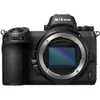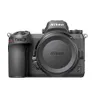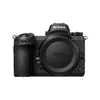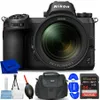99 things you need to know about the Nikon Z full-frame mirrorless camera system
Our comprehensive guide to Nikon's new Z7 and Z6 full-frame cameras and lenses
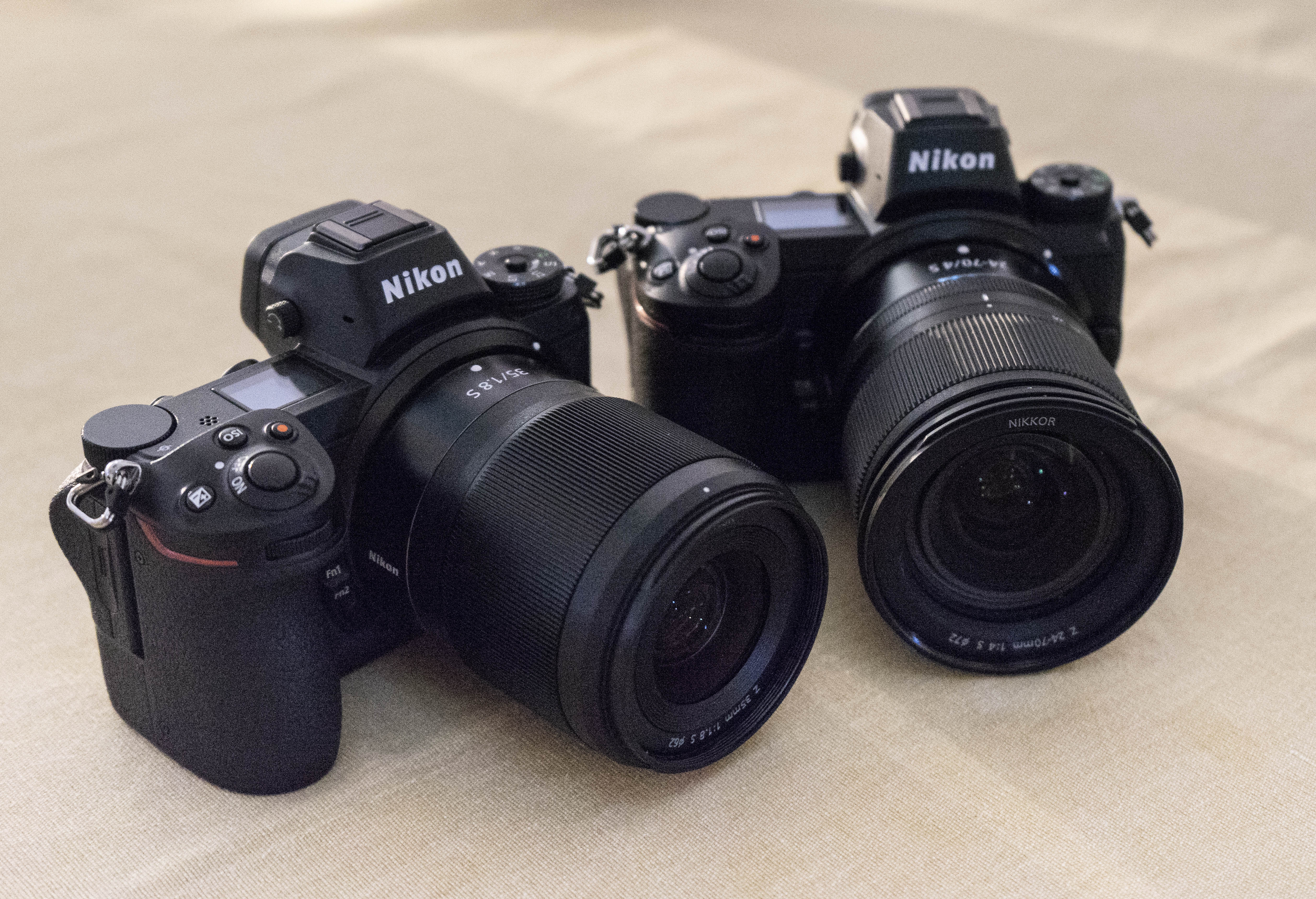
Long-rumoured, and much anticipated, Nikon’s new full-frame mirrorless Z system is finally with us. Read our full review of the Nikon Z7.
Nikon say that the new models are the most important cameras the company has launched since 1959, the year the F-mount system was born. The arrival brings Nikon, more or less, in line with its mirrorless competitors, whose own mirrorless systems are now fairly established. While the range begins with two camera bodies, namely the Nikon Z 7 and the Nikon Z 6, and three lenses, much more is promised over the next few years.
So why exactly are there two models? And what are the benefits of this new system? Nikon’s 1-system mirrorless cameras brought a number of advantages over DSLRs, but what Nikon presents with the fresh line is something different entirely.
We went to Japan to see where the Z system cameras and lenses are made to bring you exclusive behind-the-scenes imagery and factoids about the new full-frame mirrorless system. So, here is a complete guide to everything we know so far about the Nikon Z 6, Z 7 and the Z system as a whole…
THE ESSENTIALS
1. Why mirrorless?
While the two new cameras pack a wealth of pro-DSLR-level technology into their bodies, they have the advantage of being smaller and much lighter than a similarly priced DSLR. Their electronic viewfinders arguably makes them more suitable for use in low light, while the electronic shutter allows for silent shooting – something that isn’t possible on the vast majority of current DSLRs.
2. Nikon’s first full-frame mirrorless cameras
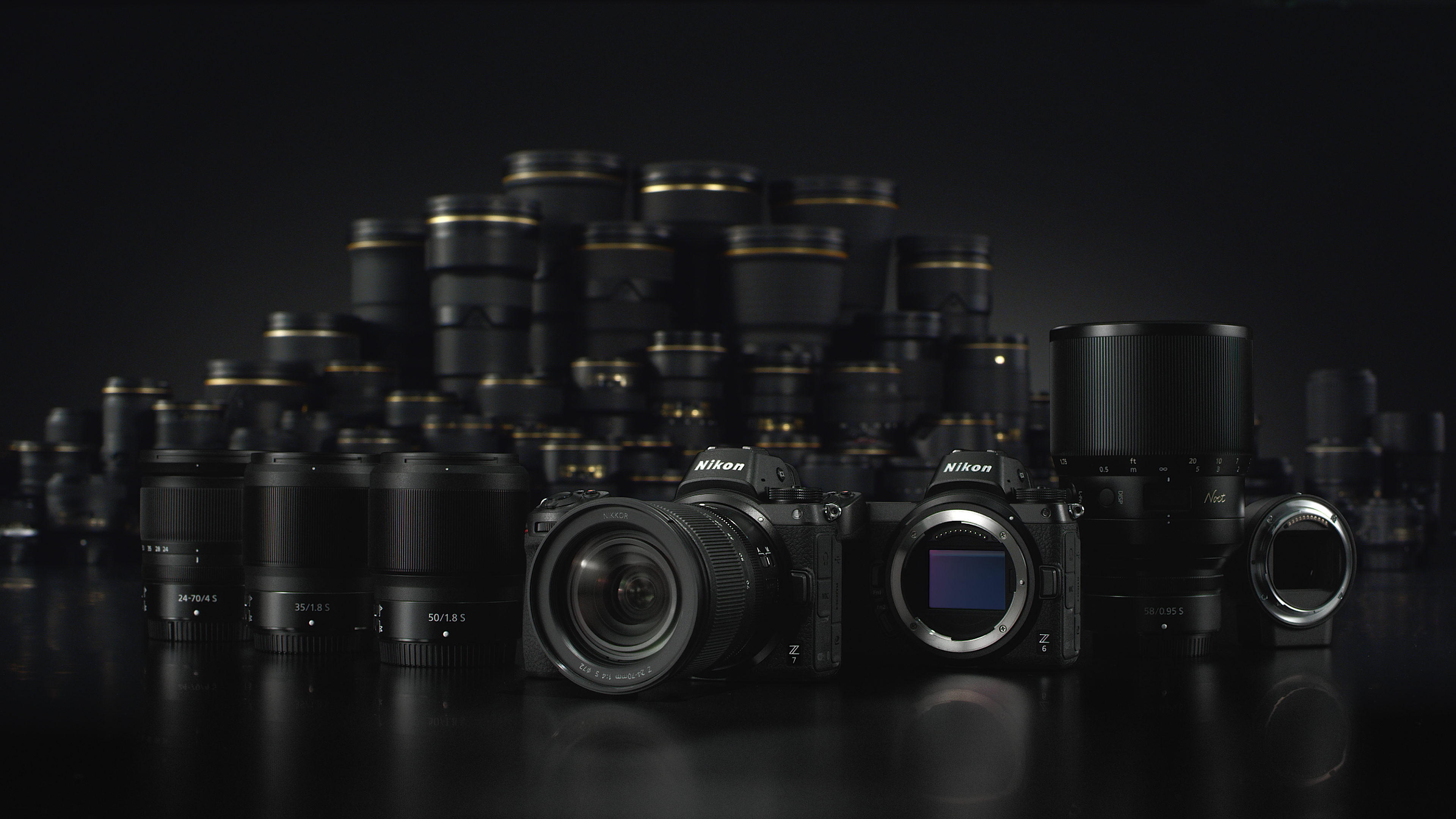
Unlike the Nikon 1 system mirrorless models that used a smaller 1in-type sensor, the new Z-system cameras each use a significantly larger full-frame sensor. This is the same size as those found inside FX-format DSLRs, and it makes Nikon only the third manufacturer to offer this on mirrorless cameras after Sony and Leica.
3. New sensors
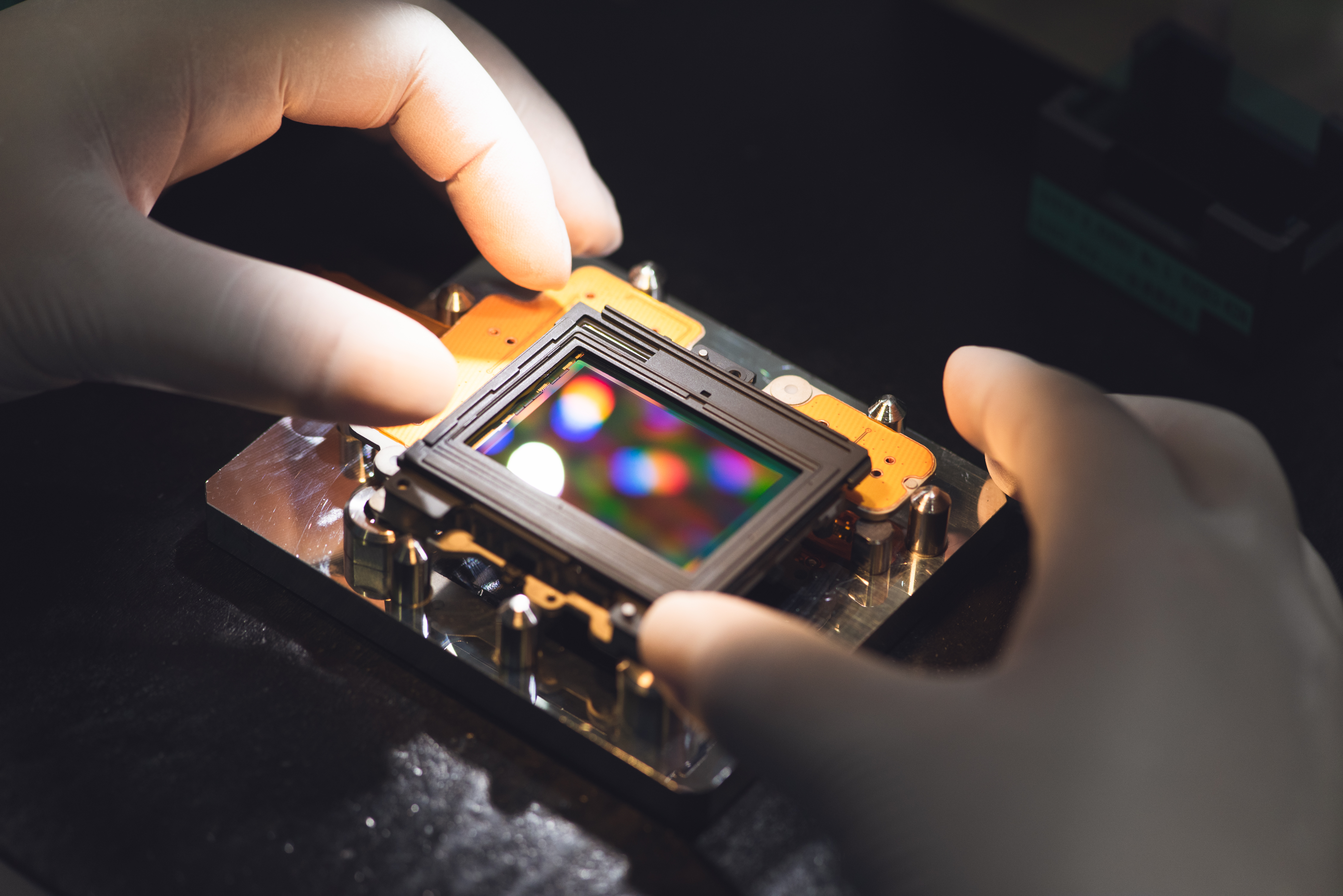
Although the sensors inside the new Z6 and Z7 cameras share a similar pixel count to the ones inside the company’s D750 and D850 respectively, they are not the same. Both sensors boast special phase-detect AF pixels that enable the same kind of autofocus as DSLRs, and both are designed with a back-illuminated construction for more efficient light capture.
Get the Digital Camera World Newsletter
The best camera deals, reviews, product advice, and unmissable photography news, direct to your inbox!

4. New EXPEED 6 processor
These two new models are also the first recipients of the company’s latest EXPEED 6 processing engines. This promises better sharpness and noise reduction than before, and also brings with a new mid-level sharpening option to the Picture Control menu.
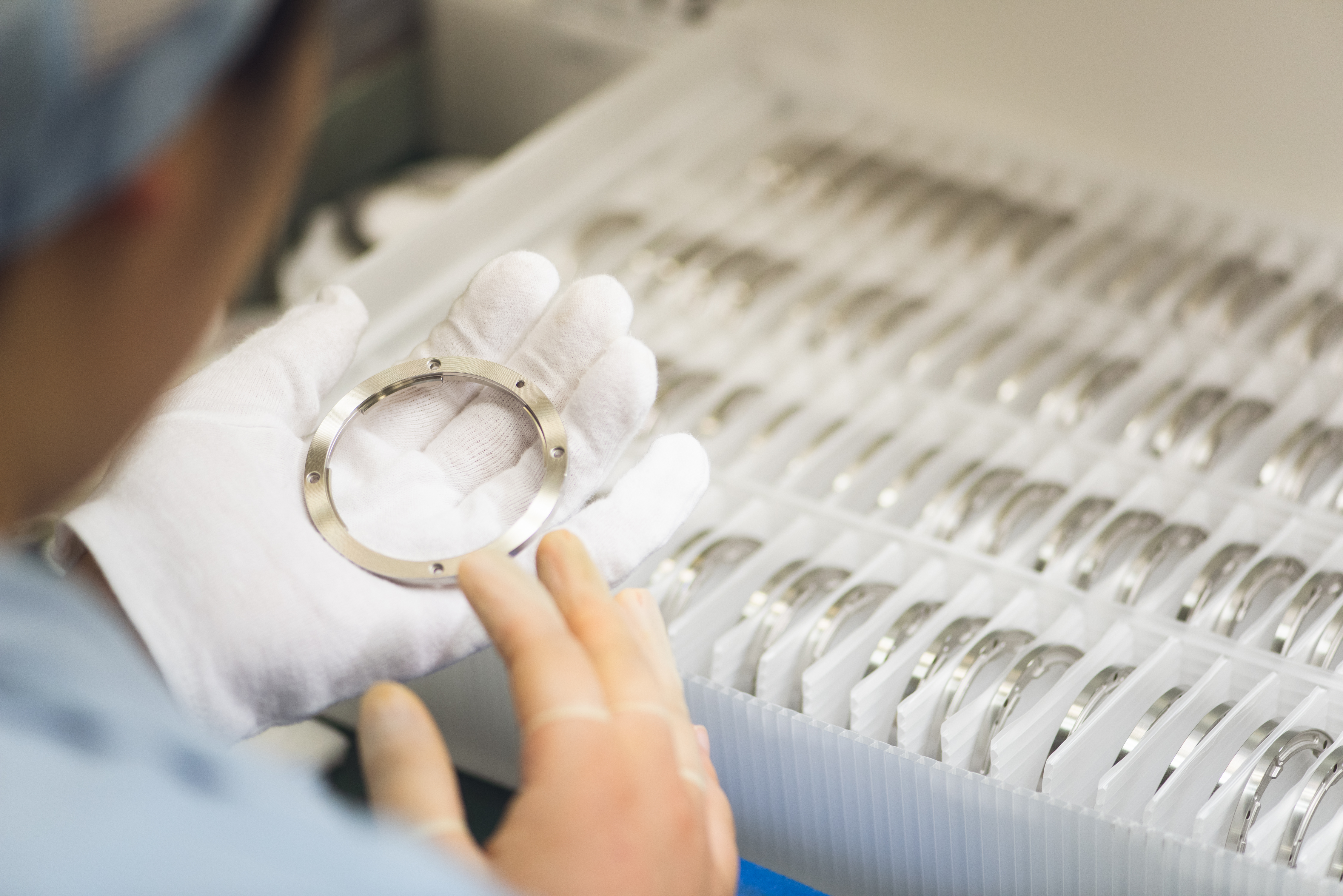
5. Brand new lens mount
The new system arrives with a new mount, dubbed the Z mount. Measuring 55mm in diameter, its 17% larger than the F-mount, and works with a new series of lenses. The range of lenses available now, and those that are in development, are set out in the Nikon Z lens roadmap.
6. 16mm flange focal distance
The short flange focal distance, which is the distance between the sensor and lens mount, allows for a more compact body design than would otherwise be the case. Together with the large diameter of the lens mount, this allows for easier illumination at the peripheries of the frame and a wider range of possibilities with lens design.
Feature: How did the Z6 & Z7 evolve?
7. Wide-apertures are easier to achieve
The large diameter of the new lens mount will allow Nikon to more easily create wide-aperture lenses. Nikon has stated that it’s difficult to design lenses with an aperture wider than f/1.2 while keeping image quality high on its current FX-format DSLRs, but this new mount gives the company more freedom when desiging these.
8. Aim is to get back to number 1 position
As well as its long-standing rival Canon, Nikon has lost some ground to other manufacturers who have worked hard to develop their own mirrorless systems. With these latest cameras, and the system as a whole, Nikon has made it clear that its aim is to get back to the number 1 spot for full-frame cameras.
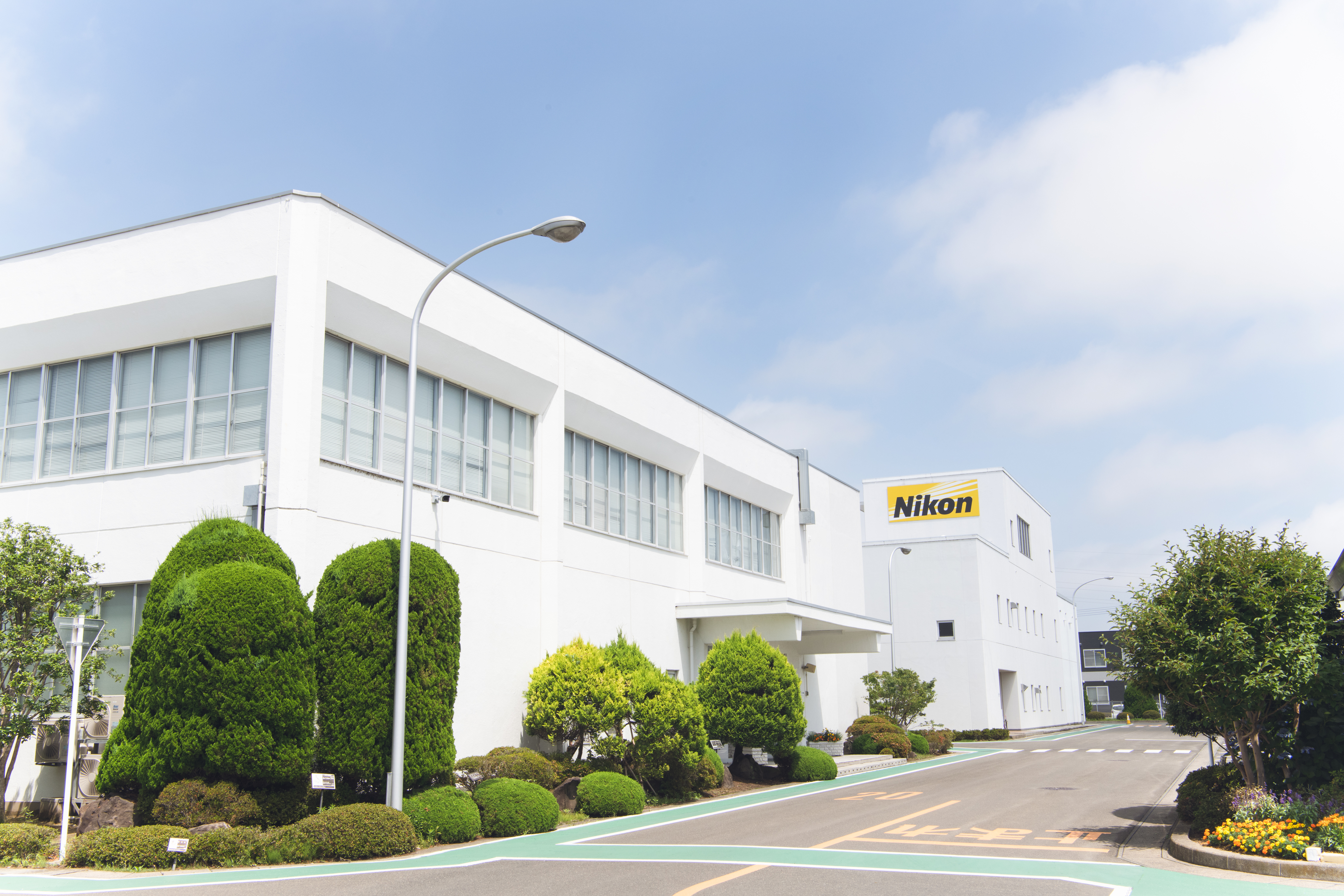
9. Assembled in the Sendai plant
The Z7 is assembled in the Sendai plant, which lies just over 200 miles north of Tokyo. The plant was badly damaged in the Great Tōhoku Earthquake in 2011 although it managed to get back on its feet just three weeks later. This is also where the D5, Df and F6 film cameras are manufactured, and it’s where the Z6 will also be assembled.
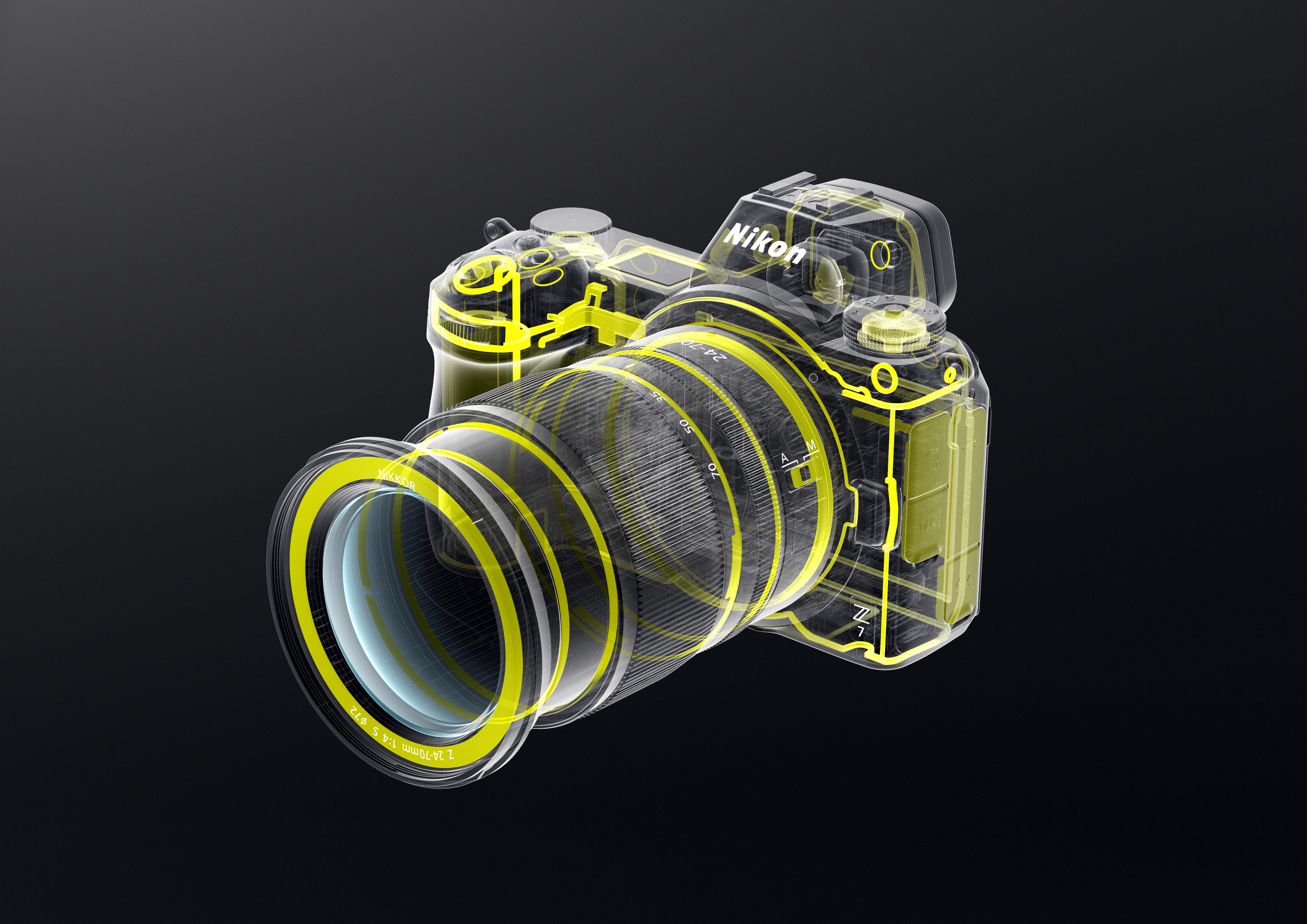
10. Same level of weather sealing as D850
Various seals around the bodies provide the new cameras with the same level of weather sealing as the company’s D850 DSLR, and dust- and drip protection extends to the three new lenses that have been announced at the same time.
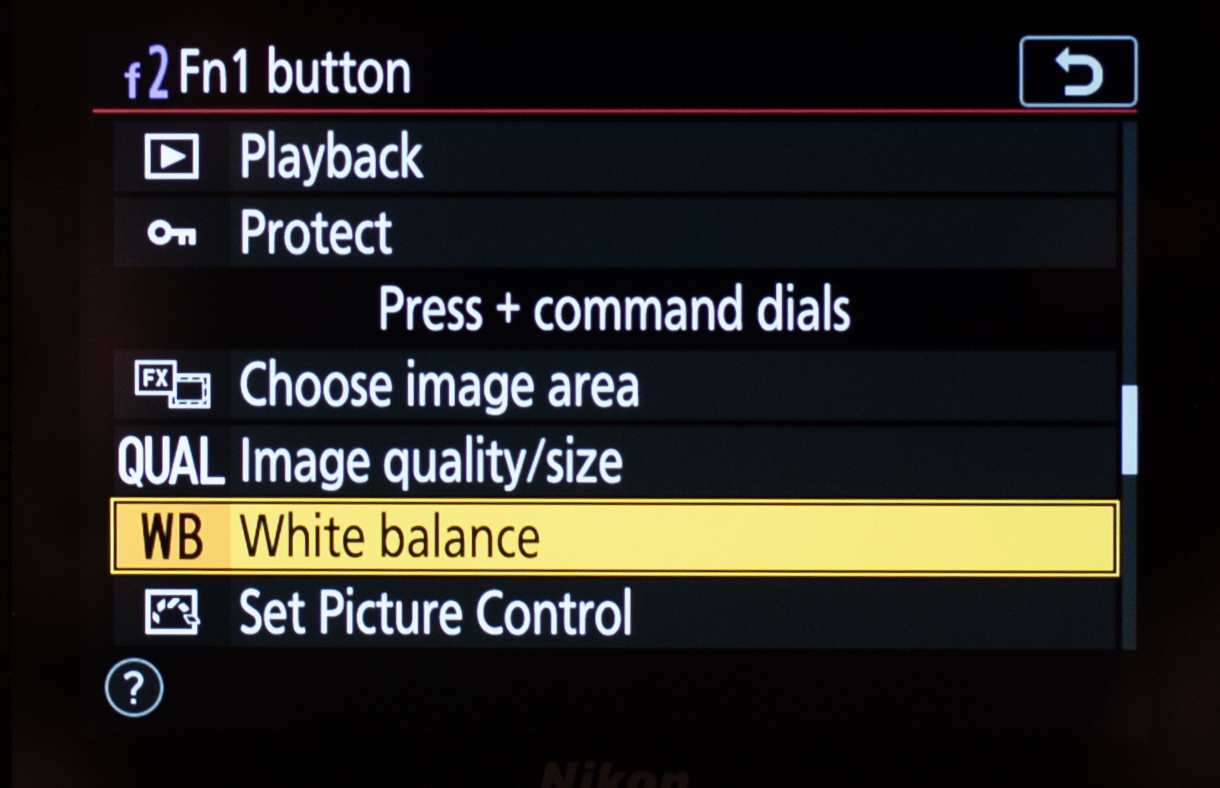
11. Fn1 and Fn2 buttons
The front plate offers three buttons: one to release the lens from the body and two Fn buttons: Fn1 and Fn2. Much like on the DSLRs that have the same setup, these two buttons can be programmed to access a setting of the user’s choosing, such as white balance, Picture Control and Image Size.
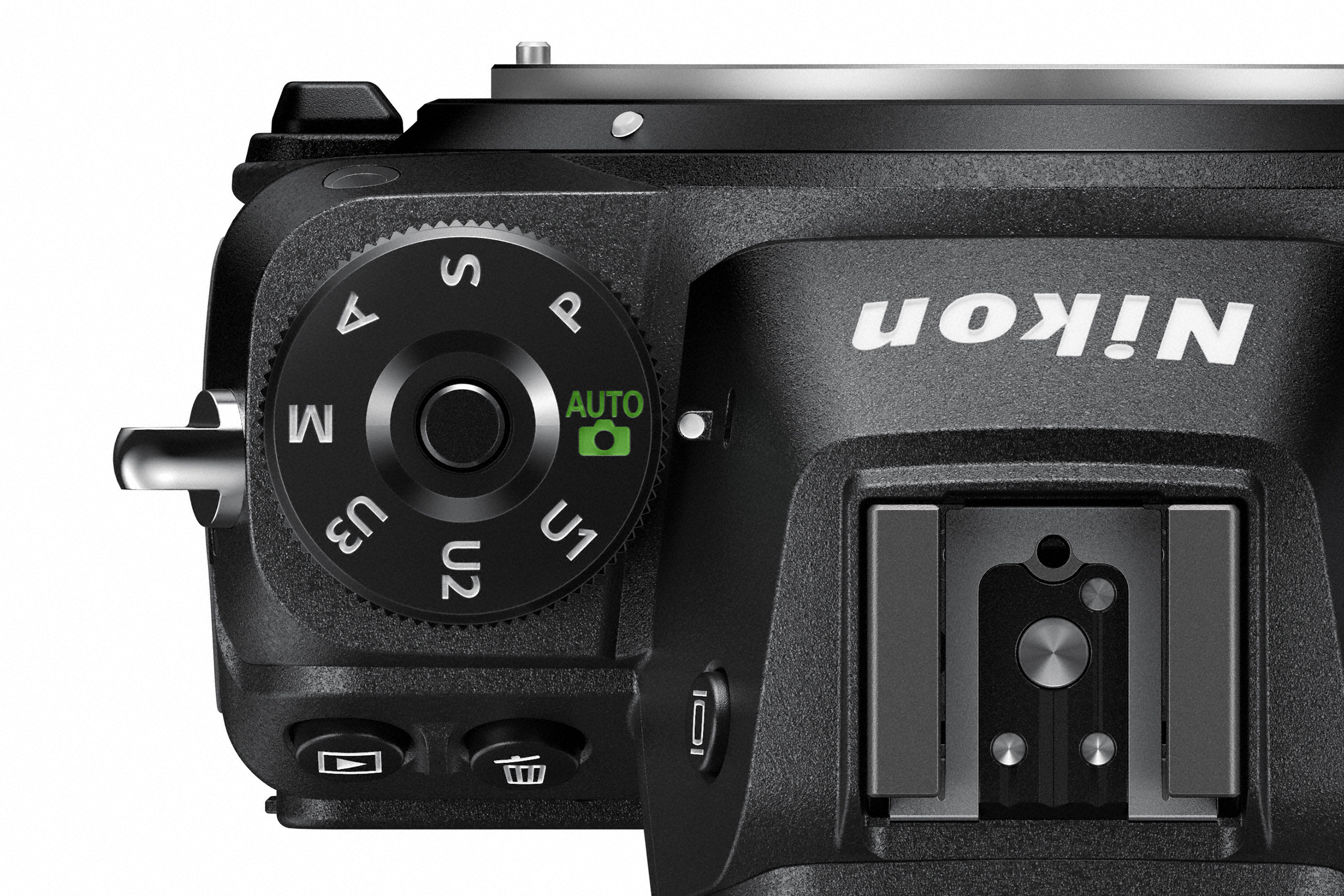
12. Mode dial
The cameras’ mode dials have the standard Program, Aperture Priority, Shutter Priority and Manual exposure options, alongside Auto and customisable U1, U2, and U3 settings. They also follow certain Nikon DSLRs in having a locking button in their centre, which keeps them in place.
13 Twin command dials
With one command dial embedded into the new cameras‘ grip and another on the top plate for the thumb to access, the new bodies provide the same kind of control as enthusiast- and professional-level DSLR with regards to adjusting camera settings.

14. Sensor-based Vibration Reduction
Vibration Reduction is something we normally get in Nikon’s lenses, but here we get it at the sensor. This system works over five directions – yaw, pitch, roll, X and Y – and is said to deliver up to 5 stops of correction. The system is offered in Normal and Sport modes, the latter for moving subjects.
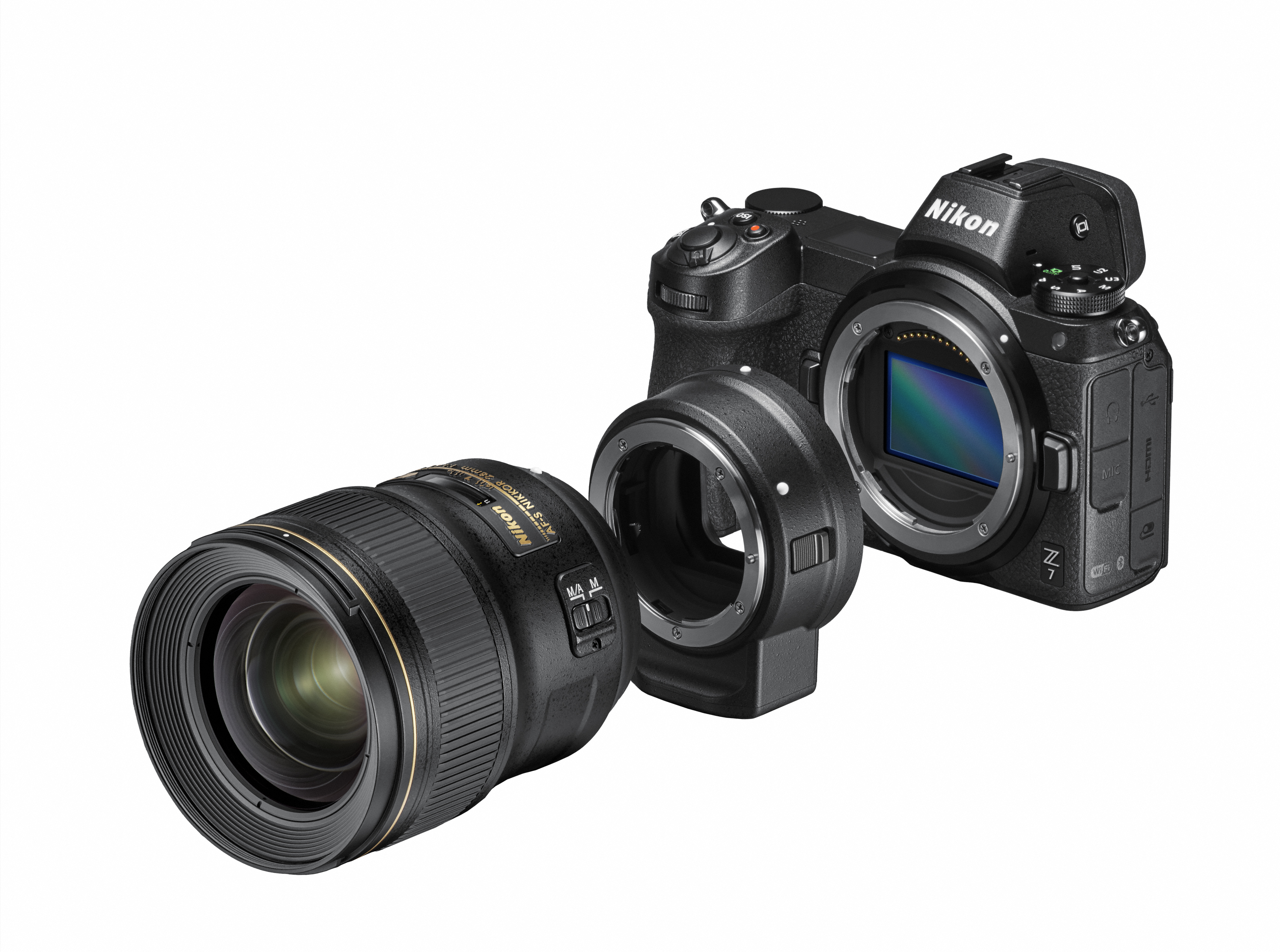
15. VR system works with VR lenses
Not only does the VR system bring stabilisation to a number of older, unstabilised lenses that are mounted with the FTZ adapter, but it will also work with lenses that are designed with the equivalent technology, with the two systems working together.
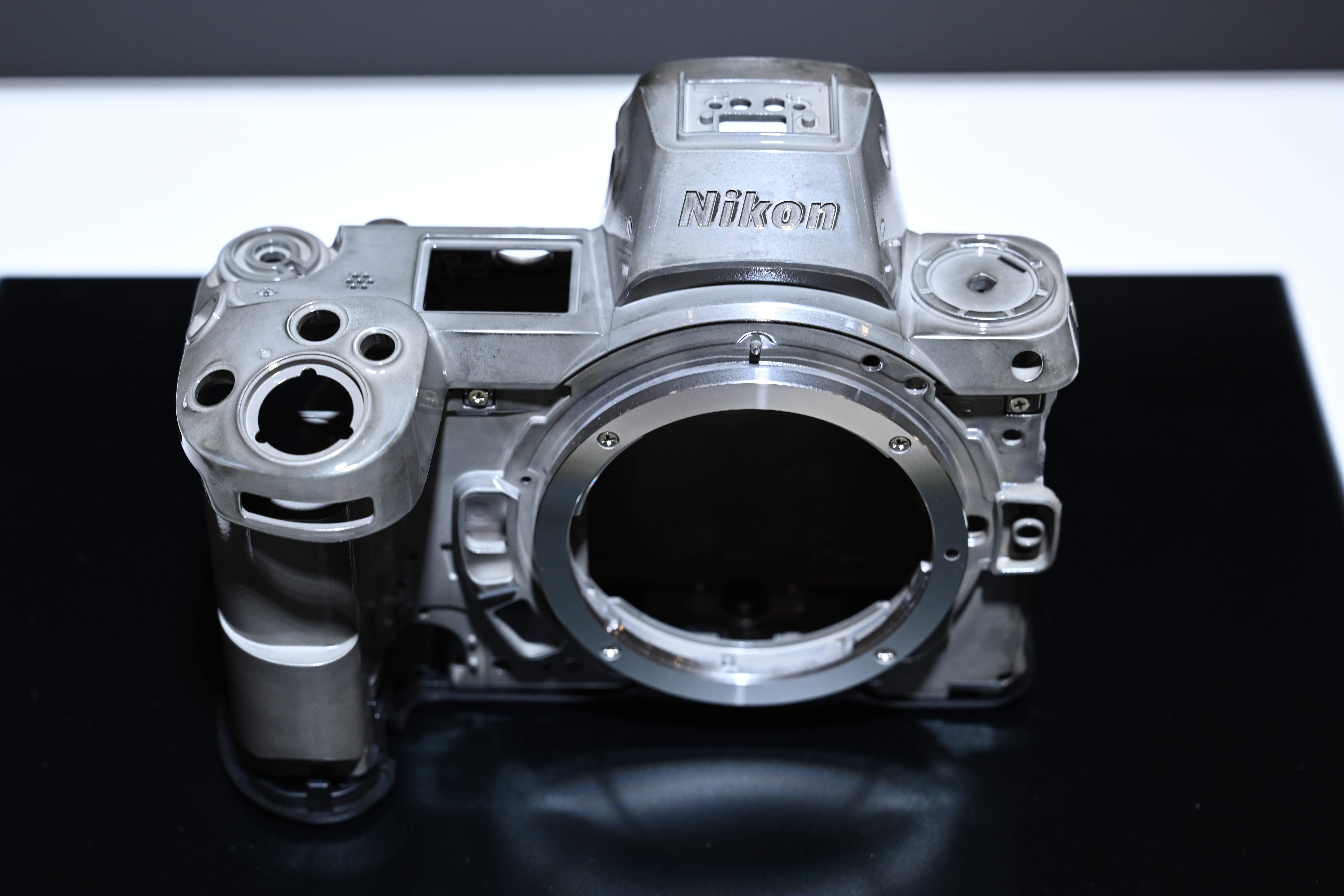
16. Magnesium alloy panels
The top, front and back plates of the new cameras are built from magnesium alloy for rigidity and light weight, the same material used in many of the company’s DSLRs.
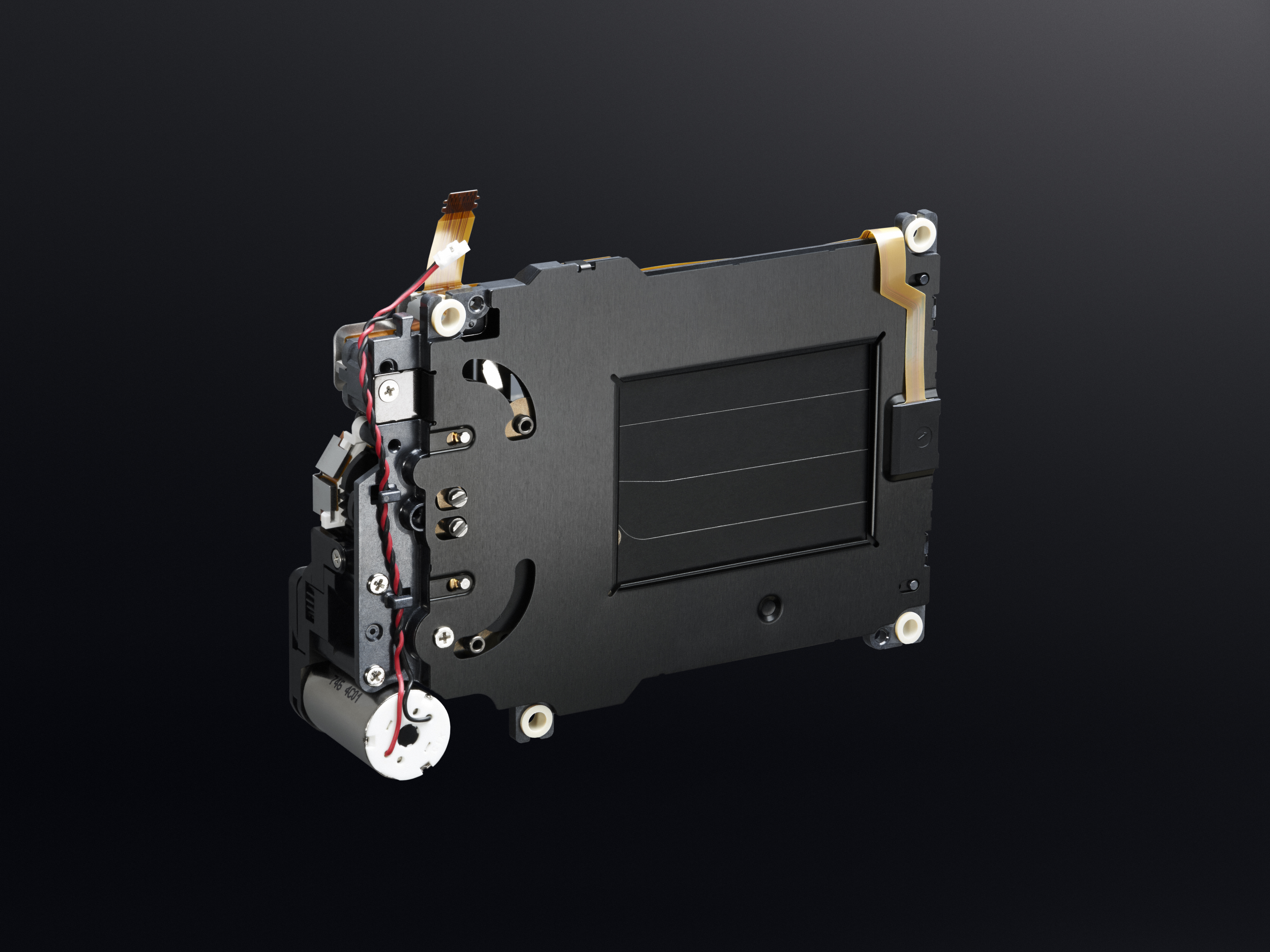
17. Shutter rated to 200K actuations
The mechanical shutters inside the two cameras have been rated to 200k actuations, which is a measure of how long Nikon’s shutter expected it to last. This is the same as the company’s D810 DSLR.
18. Speedlights through hot shoe
Flash user? Good news. The hot shoe allows you to mount the same Speedlight flash units that are compatible with the company’s DSLRs, so there’s no need to wait for these to be developed specifically for the system.
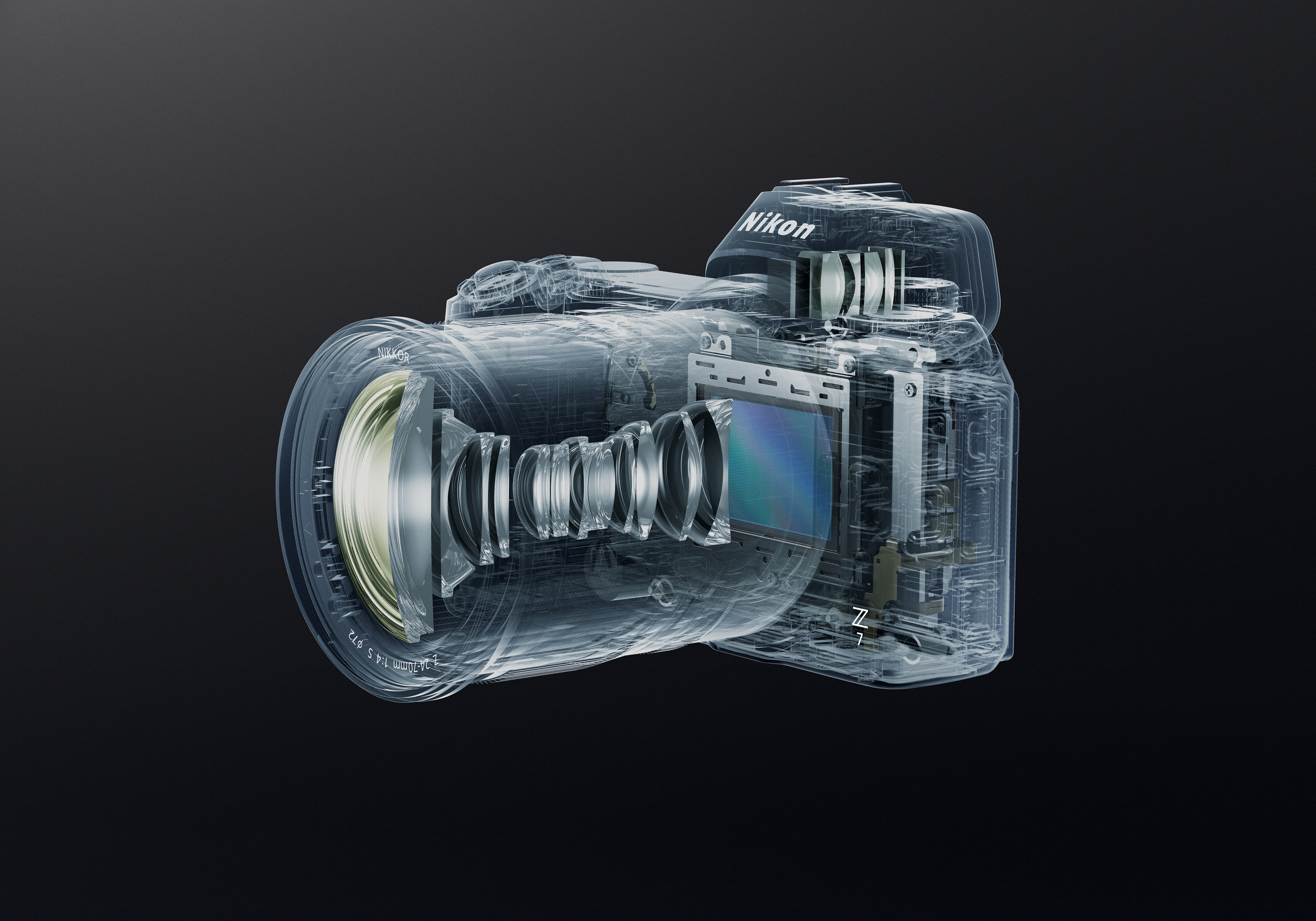
19. Lighter than a DSLR
At a weight of 585g for the body, and 675g with a battery and memory card loaded, each camera weighs significantly less than the equivalent DSLR, the Nikon D850, which comes in at 1,005g with its card and battery in place.
20 Substantial grip
Although Nikon has sought to make the bodies compact, their grips are somewhat substantial and have been designed to offer as secure and comfortable a hold as possible. Those coming from DSLRs should find this to be particularly welcome, especially if they use long or weighty lenses.
21. Three new Z lenses at launch
Nikon has announced a new S range of lenses to accompany the Z7 and Z6, and three lenses will be made available in 2018. These are the NIKKOR Z 24-70mm f/4 S, NIKKOR Z 35mm f/1.8 S and NIKKOR Z 50mm f/1.8 S. The 24-70mm will go on sale with the Z7 in September, and the 50mm will appear with the Z6 before Christmas. The Nikon Z lens roadmap shows us which lenses will come next.
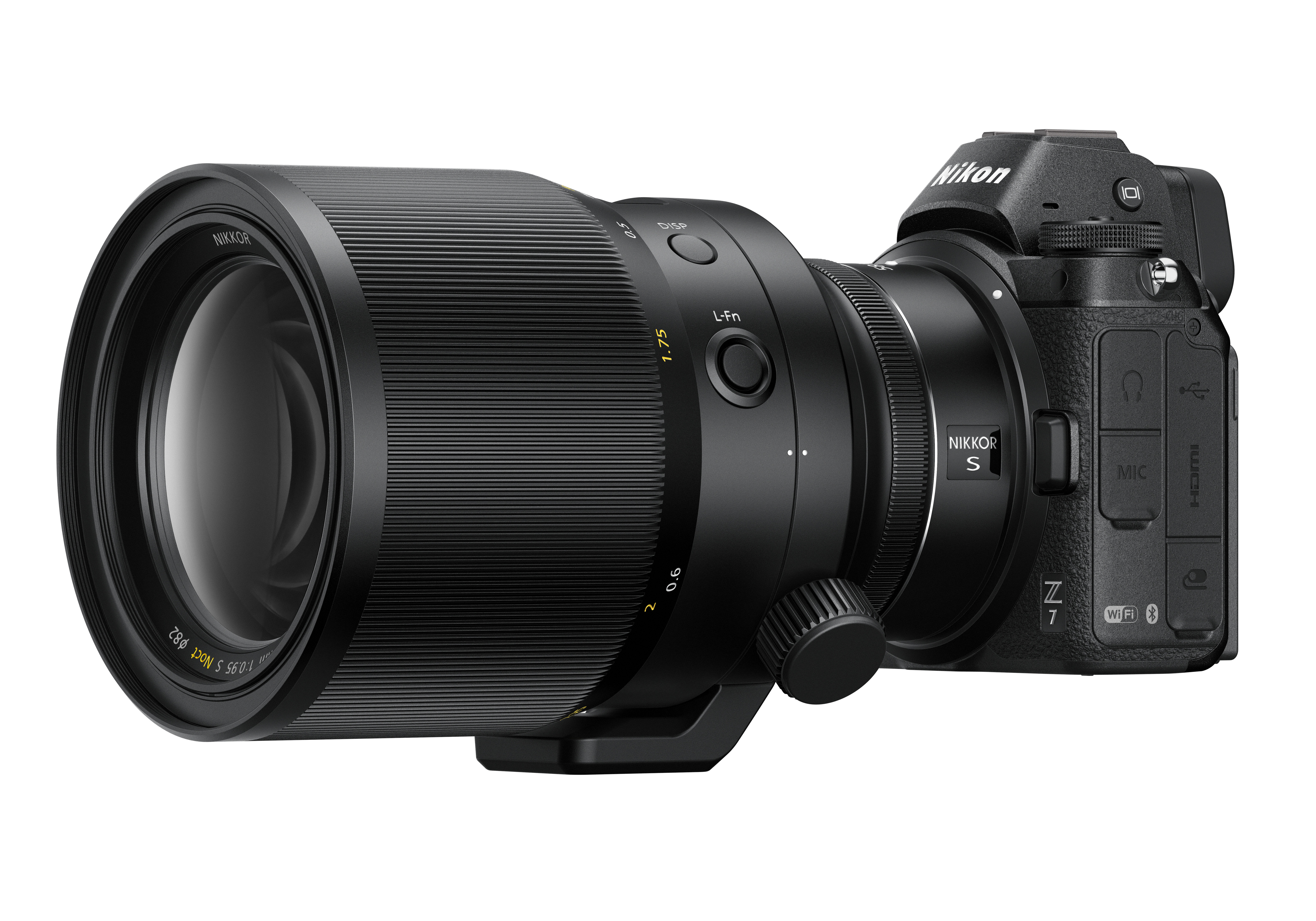

22. NIKKOR Z 58mm f/0.95 S Noct
Nikon has also announced the development of NIKKOR Z 58mm f/0.95 S Noct, a manual-focus lens with a particularly wide aperture. Set to head up the S line of optics, the lens inherits the design concept behind the original AI Noct-Nikkor 58mm f/1.2 that was released in the 70s, and is said to “symbolise the Nikon Z mount system's new dimension in optical performance.”

23. FTZ adapter
The FTZ adapter allows for hundreds of F-mount lenses to be used on the two new bodies, with support for auto-exposure. Around 93 lenses will have additional support for autofocus, meaning that they should behave just as they would if mounted on a DSLR.
24. Four clips - not three
Unlike the F-mount that holds lenses in place by three clips, the Z mount makes use of four. Nikon states that if the Z mount were to also use three clips, they would need to be longer and thicker because of the difference in inner diameter size. By using four short clips, the strength of the mount is improved, and these allow for a shorter angle of rotation when removing and attaching lenses.
25. Easier to develop video and super telephoto lenses
One of the benefits of the new mount is that Nikon can develop the kinds of lenses that are more difficult to develop for the F mount – and not just in terms of maximum aperture. Nikon cites lenses intended for video recording and super-telephoto types as two such examples.
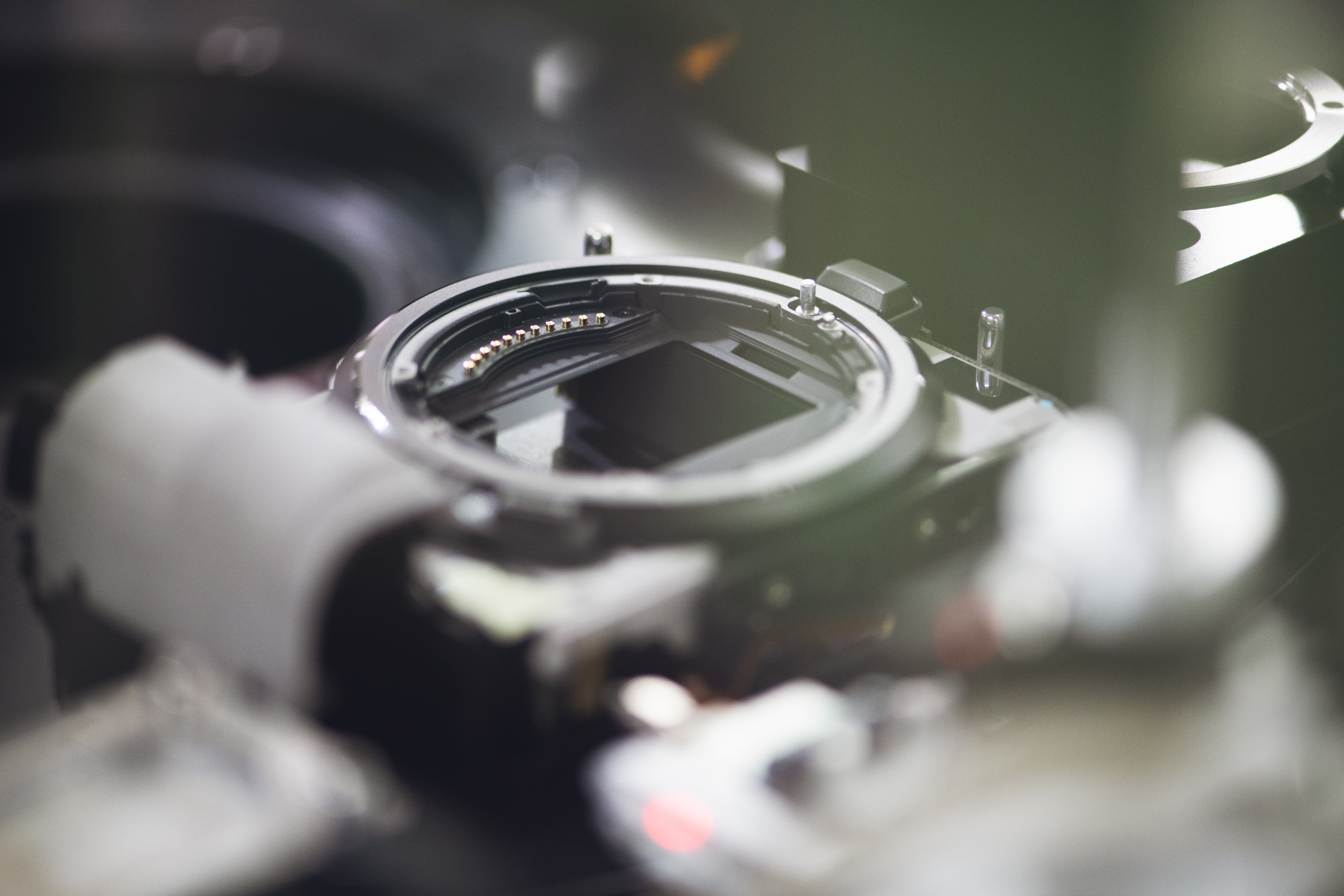
26. Better communication than F mount
This large-diameter mount, which works with a fresh line of lenses, has 11 contacts, which are said to increase both speed and volume of data communication between the camera and lens for greater AF accuracy and image quality.

27. Stainless steel and brass mounts
While the cameras’ bayonet Z mount is crafted from stainless steel, the fitting at the back of S-series lenses is crafted from brass.
28. Nano Crystal Coating on every lens
Nano Crystal coating is currently only used in selected F-mount lenses, typically those aimed at enthusiasts and professionals. Here, Nikon has chosen to use it in every S-series lens, which bodes very well for image quality.
29. New ARNEO coating
In addition to the Nano Crystal Coat, there’s also a new ARNEO anti-reflective coating that’s said to offer almost the same level of anti-reflective performance.
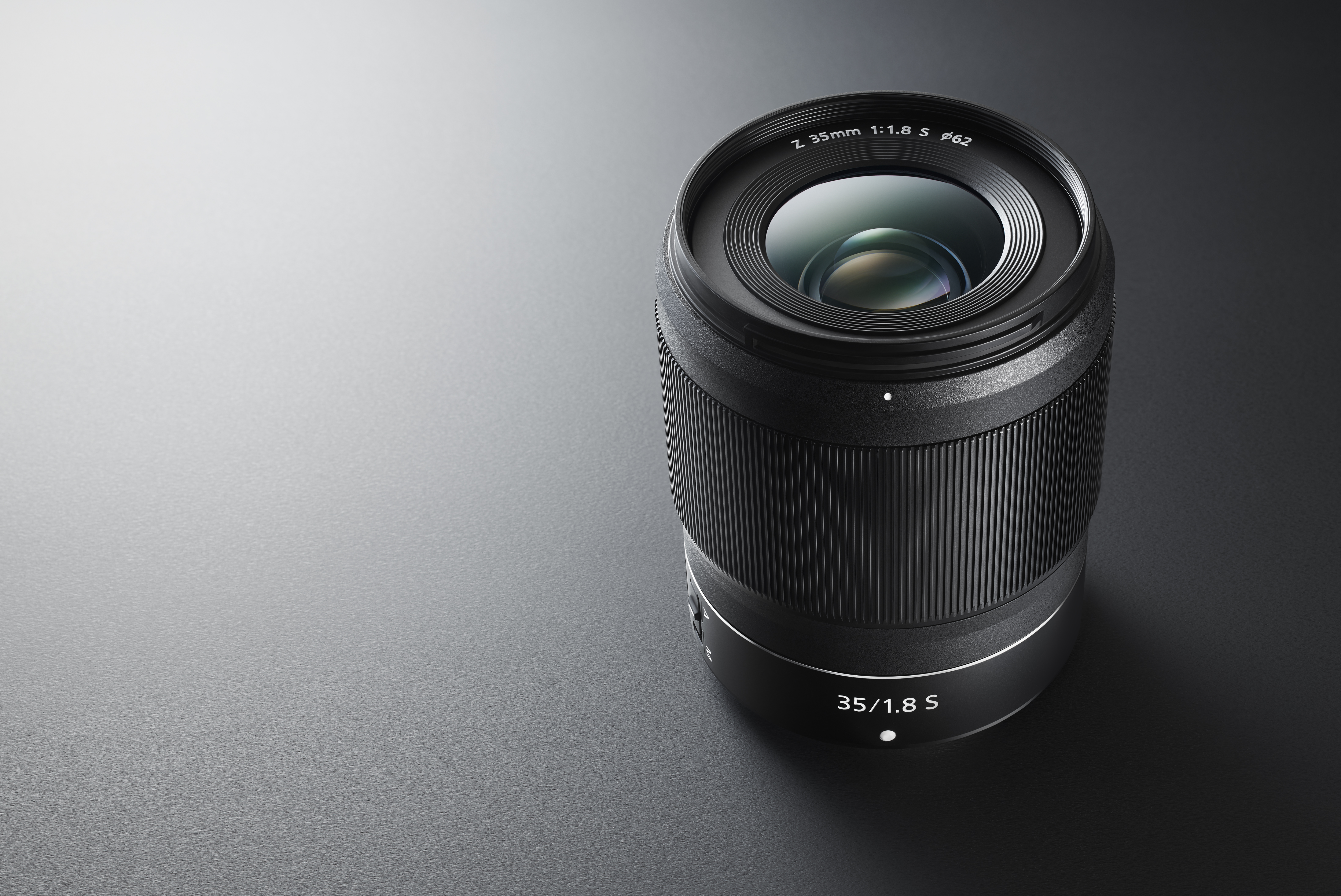
30. Sealed with a silver ring
In contrast to the gold rings used around many modern F-mount lenses, all S-line lenses are to be designed with a silver ring around their barrel. This is said to shine when the light catches it at certain angles.
31. Hybrid AF setup
The new cameras combine phase-detect AF pixels on the sensor with contrast-detect focusing, with automatic switching between the two to suit the conditions at hand.
32. Wide coverage
One of the advantages of the new focusing system is that it can cover 90% of the horizontal and vertical stretch of the frame. By comparison, the flagship D5 DSLR only offers 55% coverage across its horizontal dimension, which makes it more difficult to focus on peripheral subjects.
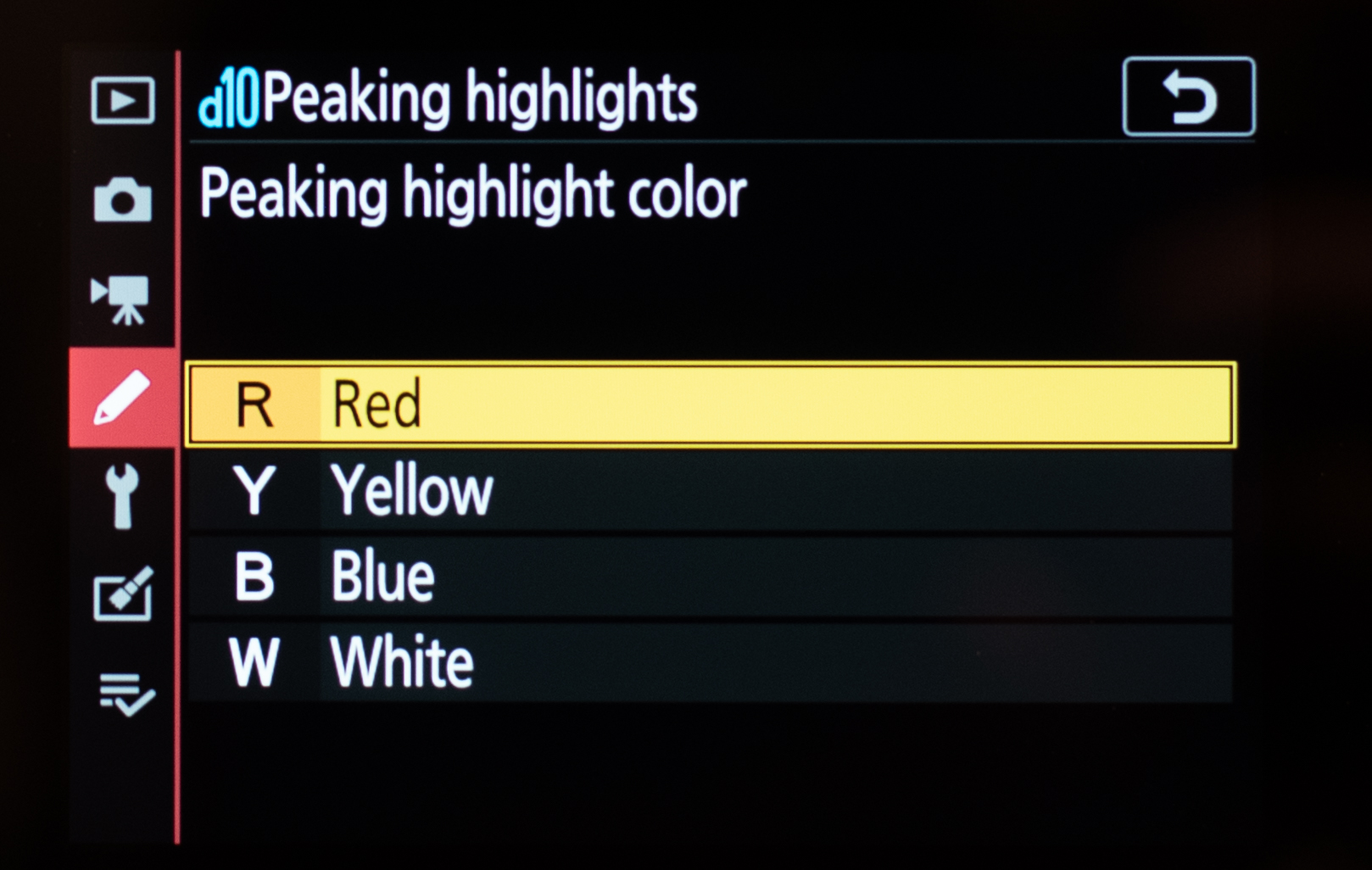
33. Focus peaking
Focus peaking, which allows you to assess the areas of highest contrast when manual focusing a lens by way of a highlight, is offered on the new models. This can have both its threshold and color adjusted, the latter being useful when it comes to photographing a subject that would ordinarily be the same color as the highlight. Red, yellow, blue and white options are available.
34. Sub-selector
The camera’s AF point can be quickly and conveniently adjusted using a joystick-style control – or ‘sub-selector’ in Nikon parlance – on the back of the camera. This feature has previously graced a number of the company’s DSLRs, such as the D500 and D850.
35. AF-ON button*
A staple of higher-end Nikon DSLRs, the AF-ON button allows you to focus separately from the shutter-release button. This is great in situations where the autofocusing system may be thrown, or when shooting with obstacles constantly passing in the way of the main subject.
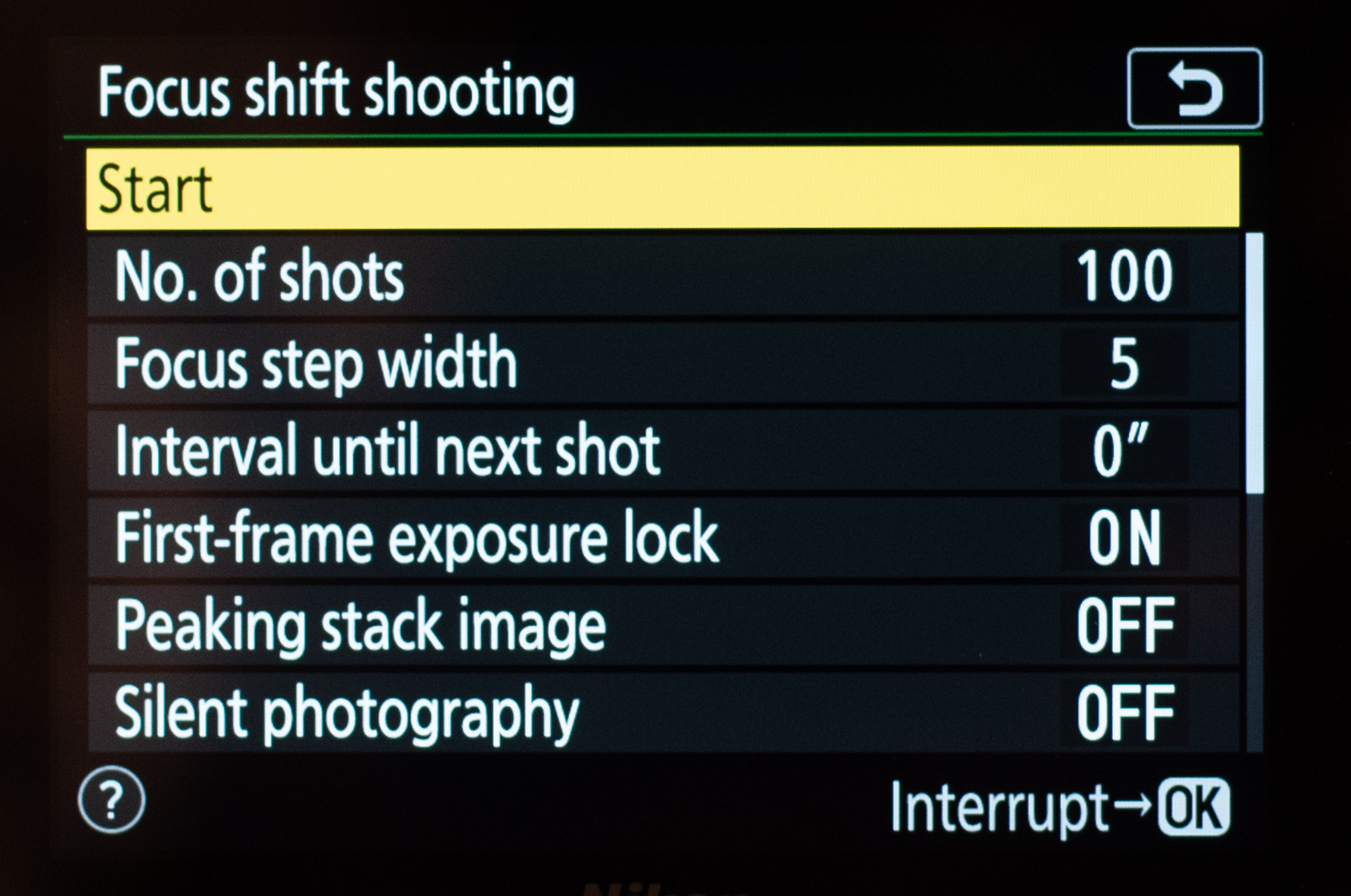
36. Focus Shift Shooting*
The Focus Shift Shooting mode allows you to capture a series of images with different depths of field, which can then be subsequently merged together into a single composite file using third-party software. A new feature here is monochrome preview of the focused areas, which helps you to work out whether your stacking will be successful.

37. Auto AF keeps track of faces*
When set to the Auto Area AF mode, the cameras are able to keep a lock on subject’s faces as they move around the scene. This is particularly useful for video recording, where subject or camera movement may encourage the camera to lose focus on the main subject.
38. Lenses designed with video in mind
Nikon states that it’s designed the new lenses to minimise focus breathing, which is where the angle of view slightly changes as focus is adjusted. With this, Nikon claims, it can achieve “supremely natural movie expression with a minimized sense of incongruity.”
39. You can adjust AF speed…*
When shooting videos, sometimes you don’t want autofocus to be too fast as it can appear unprofessional. Fortunately, the cameras’ response can be adjusted over 11 steps through the Custom Menu for smoother transitions.
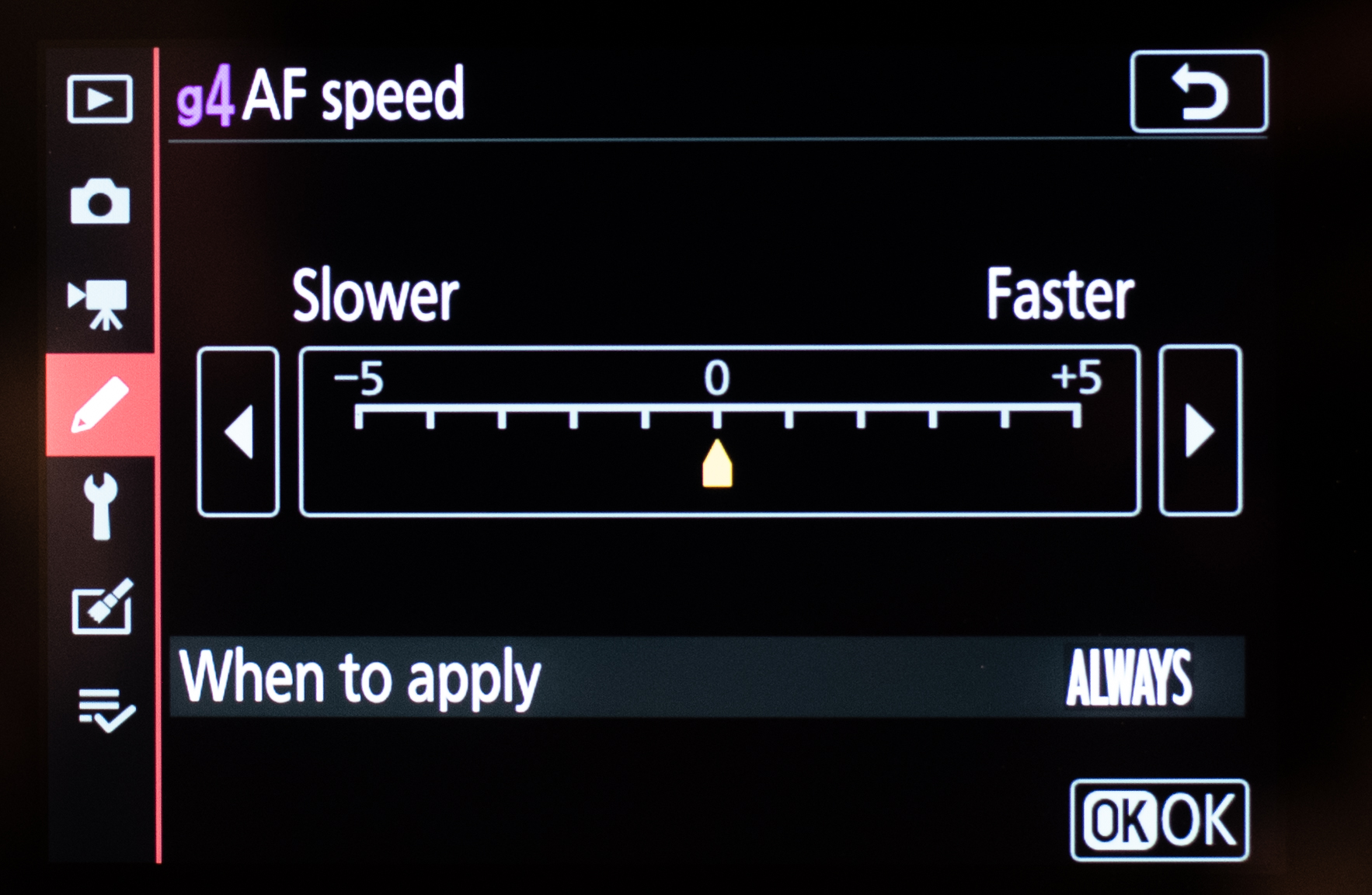
40. And also tracking sensitivity
Likewise, the sensitivity of the tracking system can also be adjusted, so that the cameras know whether to move quickly from one subject to the next or whether to focus on adhering to a single subject.
41. Highest resolution EVF on a Nikon body yet
Most mirrorless cameras with electronic viewfinders have 1.44million dots or 2.4million-dot panels, but these new models are two of the very few to have 3.6million-dot panels. This gives them a wonderful crispness, and a performance much closer to an optical viewfinder than we’d normally expect.
42. High magnification and 37-degree viewing angle
The viewfinders inside the new models have a 0.80x magnification, which is particularly generous. Not only does this eclipse the 0.72x magnification on Nikon’s D5 DSLR, but it’s even higher than the 0.78x offered by the camera’s closest mirrorless rival, the Sony A7R III.
43. 60fps refresh rate
Nikon knows that the electronic viewfinder is one of the main features that DSLR users will need to adapt to, should they switch to one of the new cameras. So, in order to make it as lifelike as possible, it has given the viewfinders on these two models a refresh rate of 60fps, which should help to prevent tearing and unnatural effects, particularly when moving the camera around.

44. Nikon optics and engineering*
It’s not just the high-resolution panel and high magnification that make these viewfinders special. They’re also said to benefit from Nikon’s optics, with an aspherical lens, high-refractive index resin and an anti-reflective coating for a clear view, together with a fluorine coating on each eyepiece lens that repels dirt and reduces ghosting and flare.
45. Dioptre control and view options
There’s a control on either side of the viewfinder chamber. On one side there’s a simple knob to control the dioptre, so that you can adjust the finder to your eyesight. On the other side there’s a View button, which lets you alternate between the viewfinder being on, off, and automatically adjusting as you move towards the sensor.
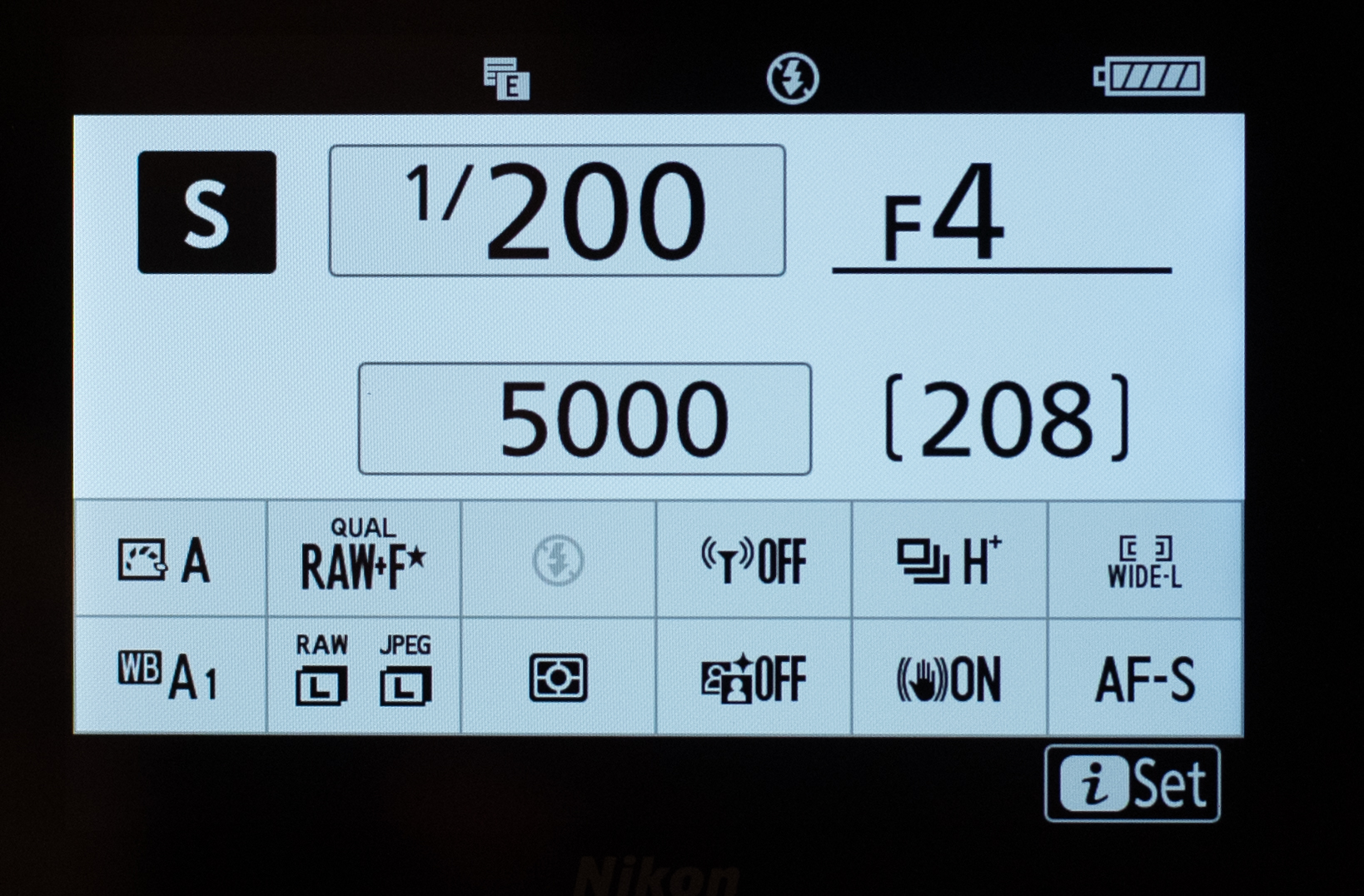
46. New 3.2in LCD screen*
The 3.2in LCD screen on these two models takes up much of the space on the rear, measuring 3.2 inches in size – just like on DSLRs like the D7500 and D850. This also has a 2.1million-dot resolution, which is very respectable on such cameras.
47. Touchscreen
The LCD screens on the new models also respond to touch. With this the user can set the focus point, focus and expose in one action, navigate menus, pinch to check for details upon playback and more.

48. Tilting screen
Not only do the screens on the new models have a wide 170-degree viewing angle, but they can also tilt both upwards and downwards – great when framing images or videos from awkward angles.
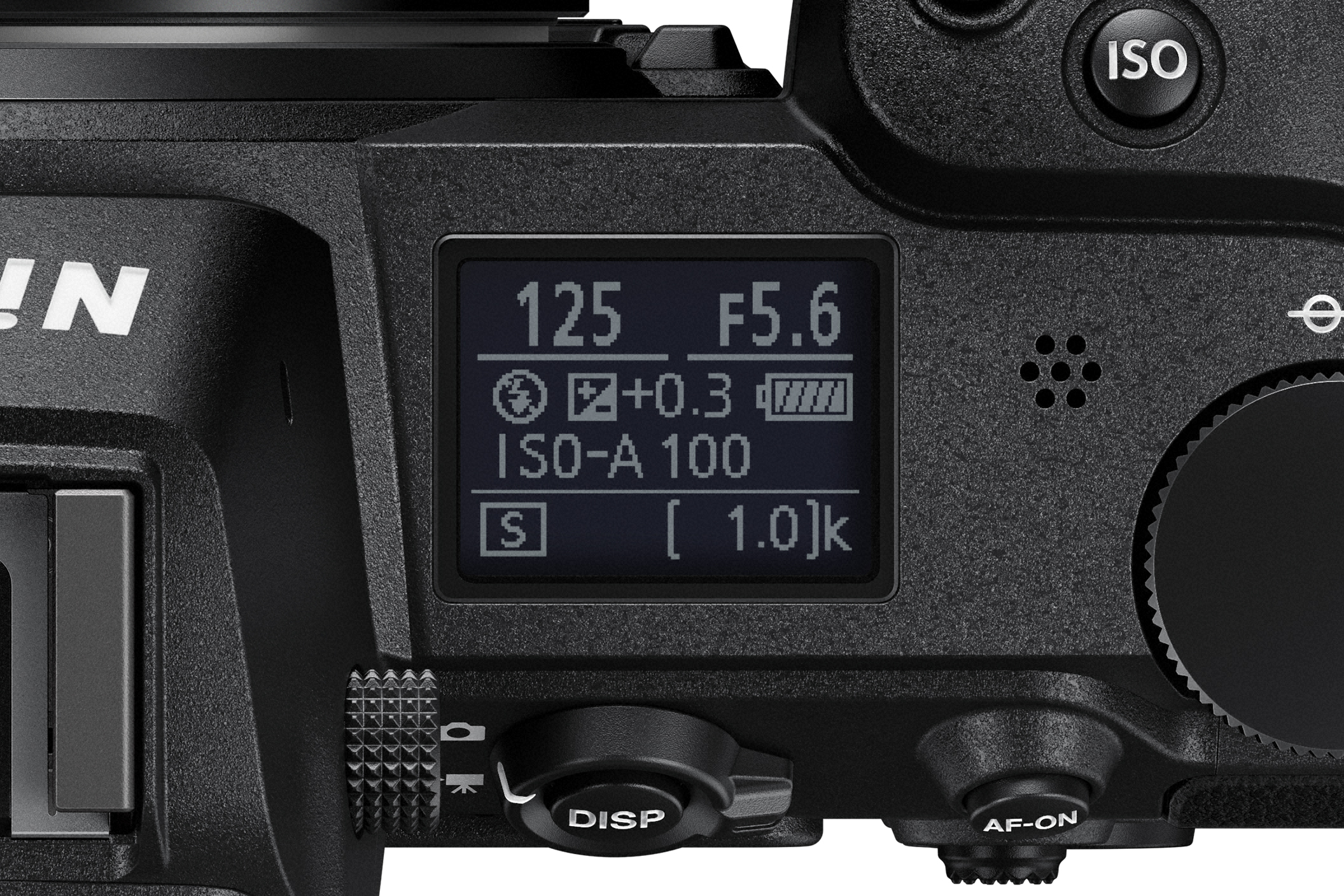
49. Top plate display
A small, square display on the top of each camera displays key exposure and camera information, such as aperture, shutter speed, ISO and exposure compensation.
50. Colour and brightest adjustment of both
It’s possible to adjust the colour balance and brightness of both the LCD screen and viewfinder on these cameras, which you may find useful if you tend to work in very bright conditions or somewhere where there may be atypical lighting that makes accurate image assessment problematic.
51. 4K video recording
The new cameras are the latest Nikon models to be equipped with 4K video recording. This is offered in the 4K UHD format that records at 3840x2160 pixels, with the option of 30fps, 25fps and 24fps frame rates.
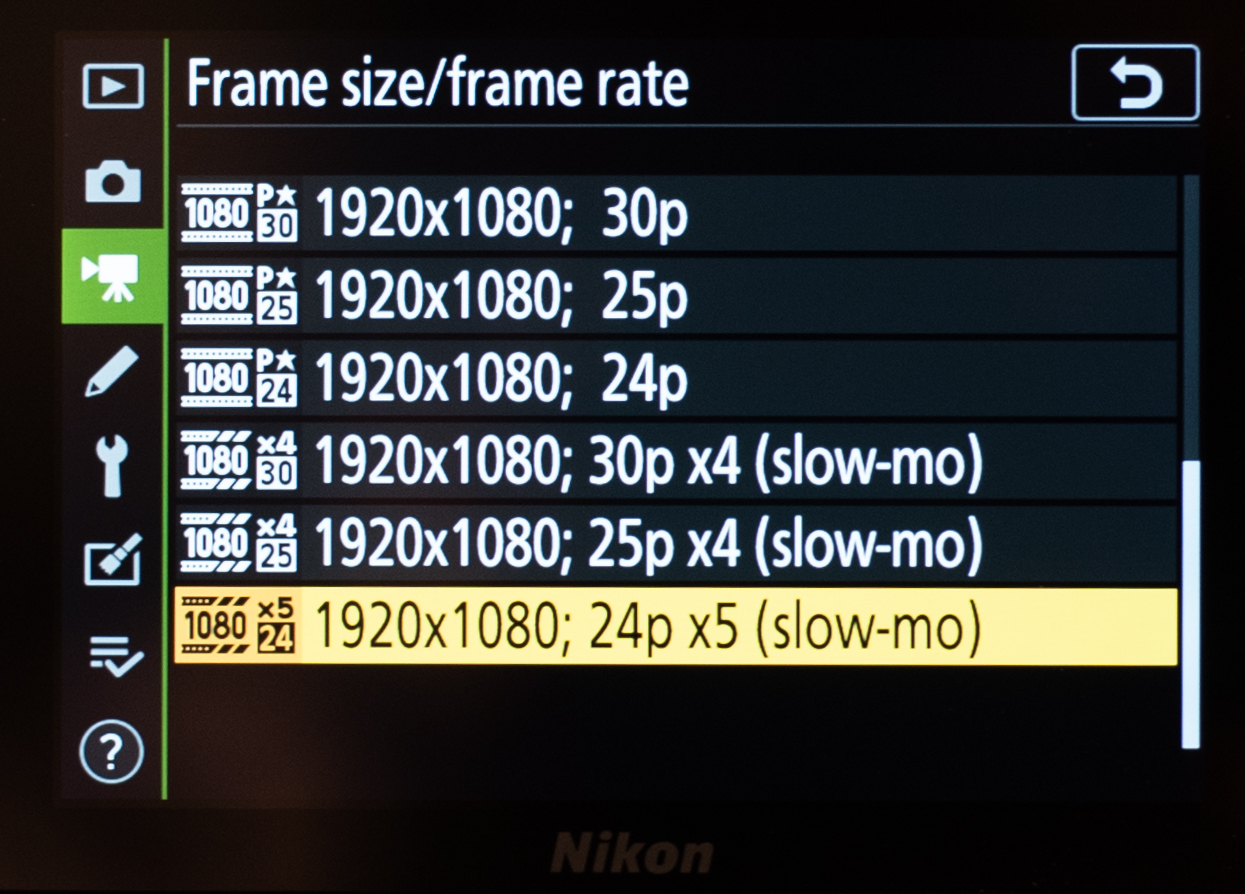
52. Full HD recording to 120p
In addition to standard 4K and Full HD videos, the Z6 and Z7 allow you to capture footage at up to 120fps for slow-motion output. This can be played back at Full HD resolution in a choice of 30fps, 25fps and 24fps frame rates, that latter providing the maximum 5x slower result.
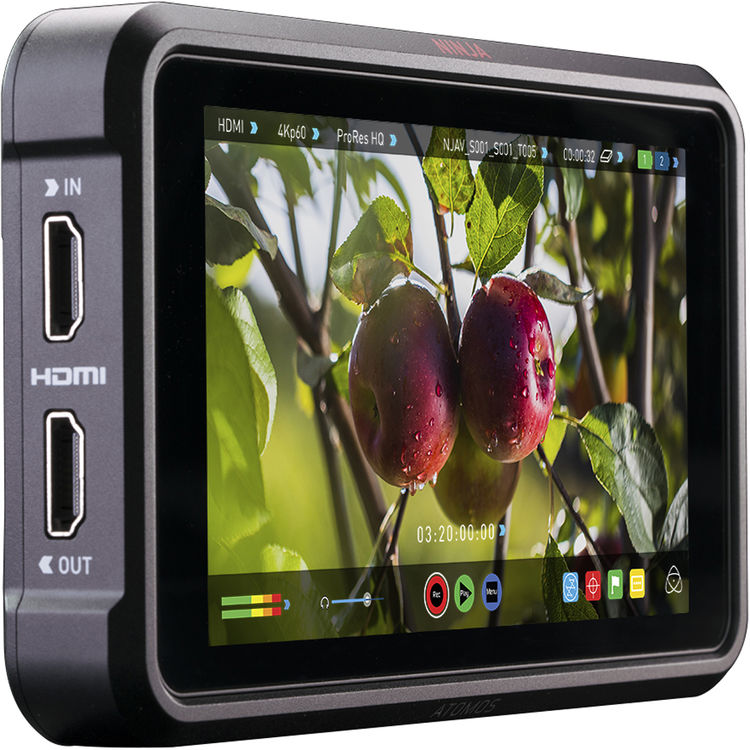
53. 10-bit HDMI out
The cameras are able to output 10-bit video footage through their micro HDMI port to an external recorder. It’s also possible to capture 8-bit 4K UHD footage in camera and simultaneously output the same to an external recorder.
54. Zero crop factor
Unlike on some other models, each camera can capture 4K footage with a zero crop factor when using FX-format lenses, be this the new S-series lenses or F-mount lenses mounted via the FTZ adapter. This is great if you want to retain wide-angle framing.

55. N-Log
Nikon’s log shooting mode, called N-Log, provides up to 12 stops of dynamic range, which gives more flexibility when grading footage later on. This appears somewhat flat on the cameras themselves, but the View Assist option gives you a better idea on screen of what final footage would look like.
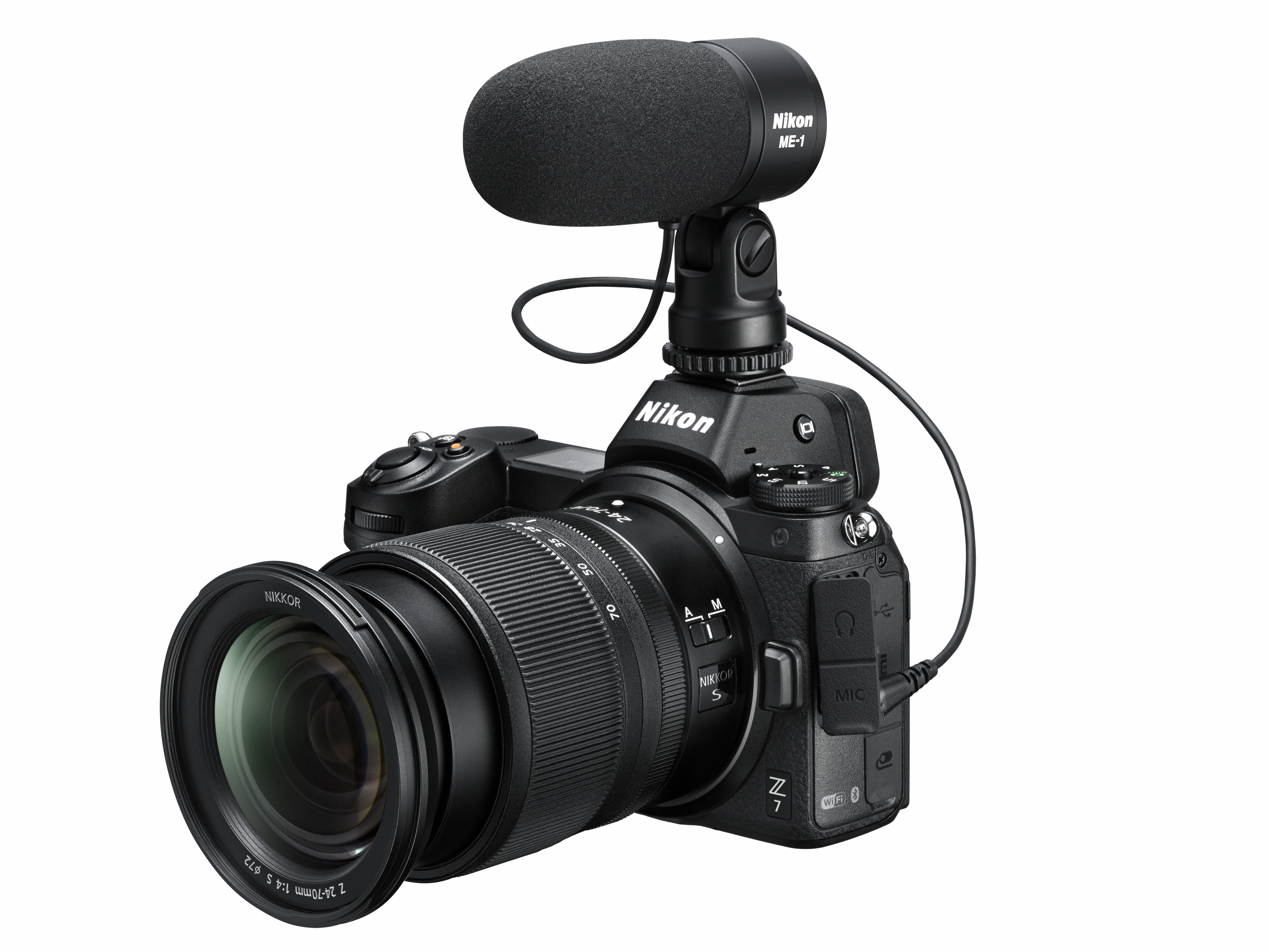
56. Mic and headphone ports
The side of each camera has 3.5mm ports for microphones and a pair of headphones. With this, videographers can take advantage of better audio capture during video recording, and also monitor audio levels more accurately than would be otherwise possible.
57. Zebra stripes
To assist with exposure and maintaining highlight detail, it’s possible to call upon zebra stripes. This feature overlays black stripes over areas of highlight detail at the threshold of the user’s choosing so that it can be seen how likely it is that highlight detail is being lost at current exposure settings.
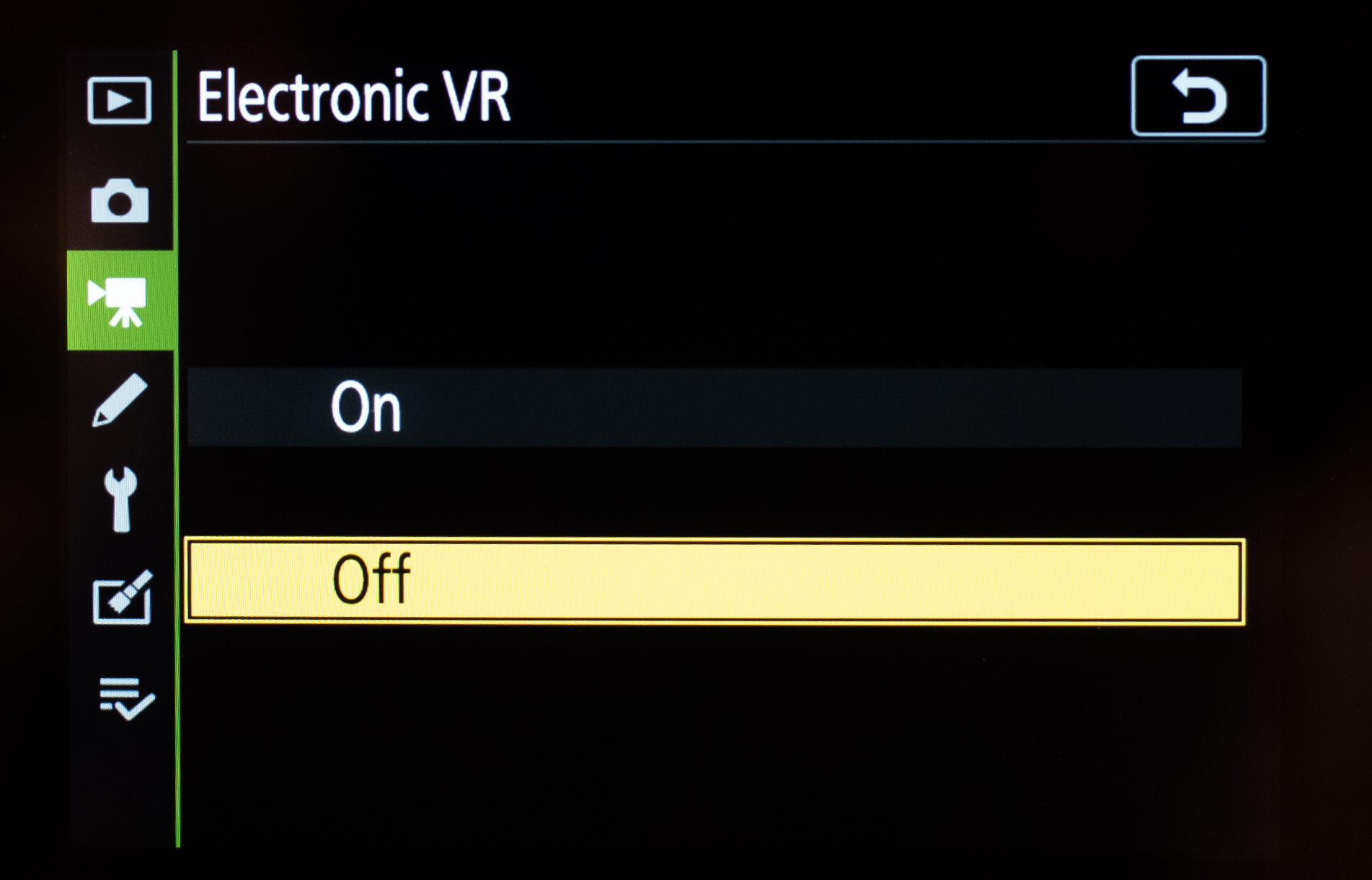
58. E-VR
Just as is the case on many of Nikon’s other cameras, it’s possible to activate an electronic version of the company’s Vibration Reduction technology when capturing videos. This can work in conjunction with optical VR systems for even steadier compositions and footage.
59. Time code
The time code option lets you sync up footage from different devices more easily. This can be embedded in footage and also output through the HDMI port to an external recorder.
60. Time-lapse 8K
You can capture to 9999 still using the interval timer, and use this to create 8K time-lapse video on the Z7, although the assembly itself does not happen in the camera. Instead, you need to use third-party software. 4K time-lapses, however, can be created in the camera itself.
61. Stills and video – at the same time
It’s possible to capture 8.3MP images while recording 4K UHD videos. Not shooting in 4K? You can still capture images that measure around 2MP when shooting in Full HD, which is perfectly adequate for online use or small prints.
62. Silent shooting
Need to be discreet? You can enable a silent shooting mode that bypasses the mechanical shutter so that you can capture images without making any noise or additional vibration.
63. TIFFs in addition to Raw and JPEG
As with other Nikon models, the new cameras offer Raw shooting in compressed, uncompressed and losslessly compressed formats, in both 14-bit and 12-bit options. JPEGs can be captured at three levels of compression, while the TIFF image format is also on hand.
64. Diffraction compensation
This feature helps to combat the softening that can affect images captured at smaller apertures, so it’s great for product or landscape photographers, or anyone else needing to rely on particularly small apertures.
65. New GUI additions
Nikon has made changes to the GUI to support some of the new technology on board each camera. One thing you can now do is press the i button as you’re shooting through the viewfinder, and a small panel with common shooting options such as Picture Control and White Balance spring up so that you can carry out adjustments without hassle.
66. 9fps burst shooting
The Z7 can fire at 9fps when set to record 12-bit Raw or JPEG files, which is the same as the D850 when using the optional MB-D18 Multi-Power Battery Pack. If you want to shoot in silence, however, you can enable the electronic shutter and still achieve a very respectable 8fps.
67. Raw batch processing
While it’s possible to process Raw images in each camera individually, you can apply the same adjustments to a batch of Raw files at once. Providing you’re using a fast enough memory card, Nikon reckons that the cameras will power through 1000 Raw files in around 38 minutes.

68. Picture Control options
20 new Creative Picture Control options are also available, and these allows for images to be treated with a range of styles as they are captured. These range from the commonly seen Toy and Dramatic to slightly more unusually named Sunday and Sombre options.
69. Remote port
The cameras work with the very same MC-DC2 remote that’s compatible with a wealth of current compacts and DSLRs, and the port for this is found just underneath the HDMI output.
70. Highlight-weighted metering
This popular option from Nikon’s DSLRs has made the cut here, and it’s great for occasions where you’re shooting a brightly-lit subject against largely dark surroundings.
71. 1:1 option
Nikon is the latest manufacturer to cater for the needs of those shooting with social media output in mind, with a 1:1 image area option to capture square-format images available for selection
72. USB charging
Much like many current compacts and mirrorless cameras, you don’t need to remove the battery from these cameras in order to charge it. Instead, you can charge this through the USB Type C port, with a small light above that indicates charging status.
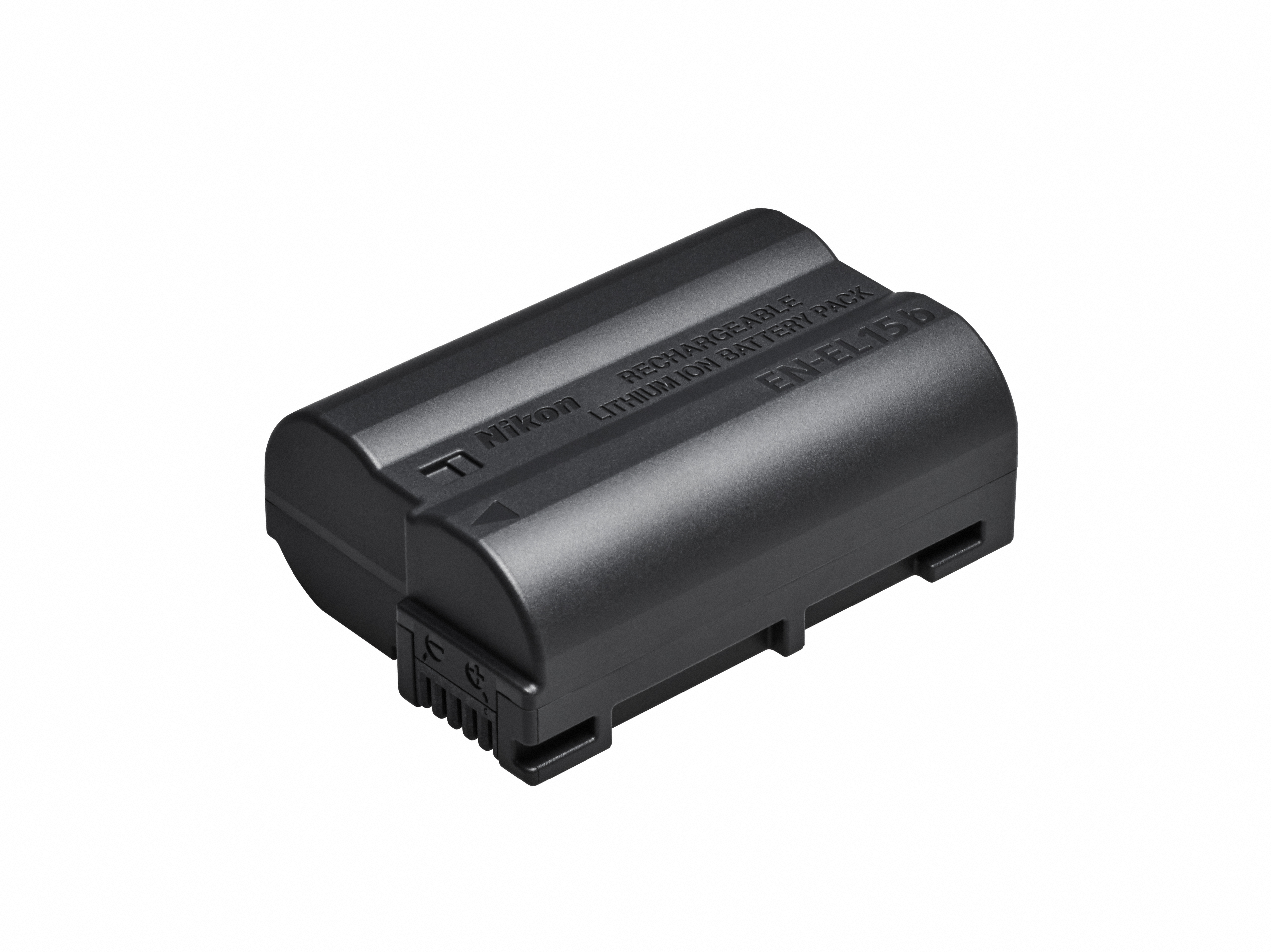
73. Can use same battery as the D850
Although the new cameras will come with an EN-EL15b battery, they will also work with the EN-EL15a that’s currently supplied with the D850. This is great news for those who may already be using the D850, particularly if they plan on keeping it, although these can not be charged via the USB port in the same way as the EN-EL15b cell.
74. 330-shot battery life
The new EN-EL15b battery offers around 330-frames per charge (according to CIPA standards) when used with the Nikon Z7. For those recording videos, this equates to around 85 minutes of recording footage.
75. New battery pack under development
Nikon has also announced that it will be developing a new MB-N10 battery pack for the Z6 and Z7. This holds two batteries for the benefit of those shooting for extended periods of time, although it will not have the shutter-release controls that adorn similar units.
76. Just one XQD card slot
Each camera has a single card slot, and this accepts the same XQD memory cards that can be used in models like the D500, D850 and D5. XQD cards have a size that’s in between SD and CompactFlash cards, and Nikon has chosen this format for its speed and solidity.
77. Bluetooth LE and Bluetooth Classic
Bluetooth allows for straightforward connection to smart devices. You can send 2MB images to your device continuously over Bluetooth Low Energy, or full-resolution files otherwise over a standard Bluetooth connection.
78. Wireless with dedicated CPU
You can use the camera to transfer images to smartphones at up to 25mbps, which is said to be around twice as fast as was possible on previous models.
79. SnapBridge
As with many recent cameras, the Z6 and Z7 work with Nikon’s SnapBridge system to facilitate remote control from a smart device, in addition to constant image transfer.
80. PC transfer
Want to send Raw files or JPEGs straight to your Mac or PC? Nikon has aimed to make this straightforward on the new cameras, offering both a direct connection between the camera and computer or connection through a router.
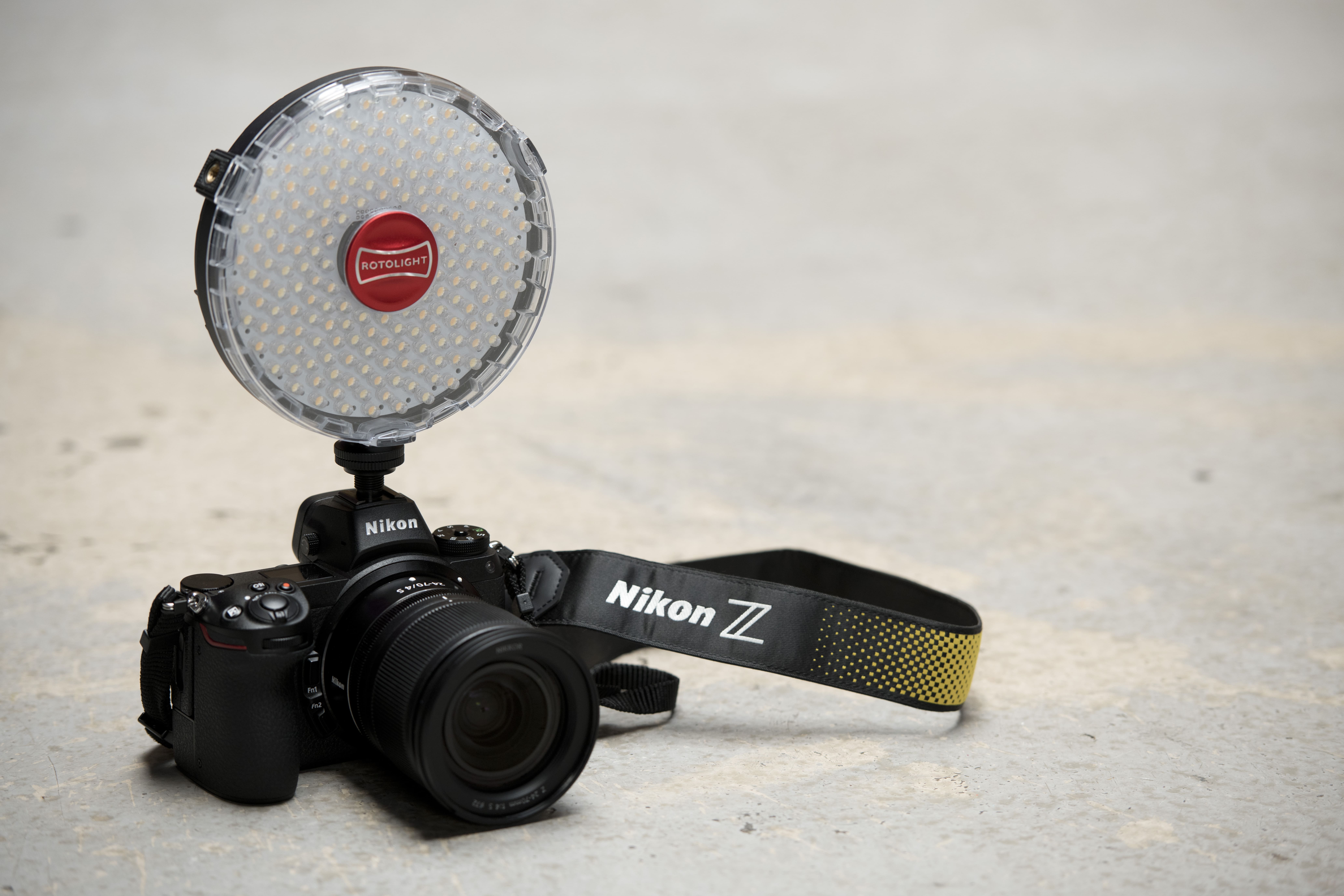
81. Partnerships with Rotolight and Atomos
Nikon has stated that it will be partnering with other companies to ensure compatibility with popular accessories. So far, it was worked with lighting manufacturer Rotolight and external recorder specialist Atomos.
82. Optional WT-7 transmitter
Although the wireless connectivity that’s built into both cameras should suffice for everyday use, those needing to send large batches of images or videos securely can also take advantage of the WT-7 transmitter. This can send files across to a computer or FTP server over a more stable wired or wireless LAN connection.
83. Sensor
The most significant difference between these two models concerns the pixel count of the sensors. The Z7 has a 48.69MP sensor that offers 45.7MP effective output, while the Z6 has a 25.28MP sensor that outputs 24.5MP images. This difference appears to be behind a number of further differences between the two.
84. ISO range
While the Z7 has a native ISO range of 64-25,600, and expansions settings equivalent to ISO 32 and ISO 51,200 on top of this, the Z6 offers a slightly higher starting point of ISO 100 and a top setting of 51,200 in its native range, together with expansions to ISO 50 and ISO 204,800 equivalents.
85. Focusing system
Both cameras have the same phase- and contrast-detect AF system, but they differ in the number of phase-detect AF points. While the Z7 has 493 points in total, the Z6 offers 273, although both cover the same 90% horizontal and vertical stretch of the frame.
86. AF working range
The Z6’s lower-resolution sensor and higher ISO range already makes it slightly more suited to low-light captures, but its AF working range is also more impressive in low light, focusing down to -2EV rather than the -1EV of the Z7.
87. Burst rate
Another key difference between the two, and potentially something that will make a difference for the action photographers, is that the Z6 manages 12fps burst shooting, whereas the Z7 only manages nine. Switch to 14-bit Raw shooting, however, and you’ll find that the difference narrows, with the Z6 and Z7 offering 9fps and 8fps respectively.
88. 6K oversampling
The Z6 can capture oversampled footage using the full width of its sensor, equivalent to around 6K initially before this is downsampled to 4K. This is something the Z7 can only do when set to capture footage using the Super 35mm crop mode.
89. Time-lapse
The lower sensor resolution of the Z6 means that it can’t offer the same 8K time-lapse capabilities as the Z7. Instead, it offers a 4K time-lapse capability.
90. Wi-Fi difference
The Z6 also appears to have a very slightly different wireless system in board. While both models offer Wi-Fi and Bluetooth, the Z6’s radio is rated at 7.4 dBm for 2.4GHz Wi-Fi rather the the Z7’s 7.0 dBm, and 12.2/9.2 dBm against the Z7’s 12.1/9.1 dBm for 5GHz. With Bluetooth, it also packs a 1.9 dBm radio vs the Z7’s 1.5 dBm radio.
91. Battery life
Although both models use the same battery, battery life itself is not the same. While the Z7 can fire up to 330 frames per charge, the Z6 manages a slightly lower 310 frames (both figures according to CIPA specifications).
92. Price difference
The Z6 will considerably cheaper than its Z7 sibling too. In the UK, the camera will arrive with an RRP of £2,099 for its body alone, versus £3,399 for the Z7. Similarly, US body-only prices put the Z6 at $2,000 and the Z7 at $3,400.
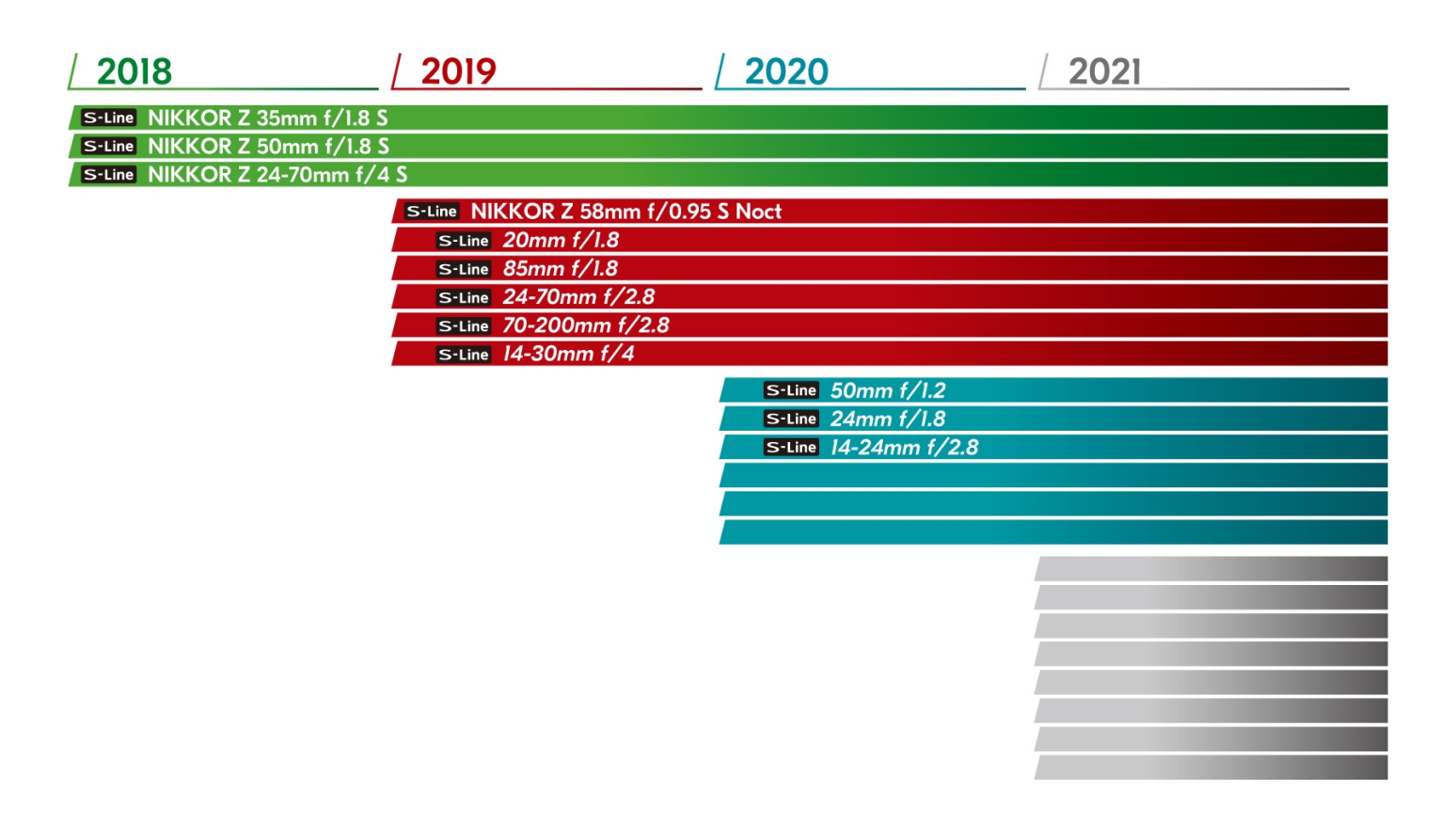
93. Z-mount lens road map
A lens road map reveals that Nikon will be launching
20mm f/1.8,
85mm f/1.8,
24-70mm f/2.8,
70-200mm f/2.8 and
14-30mm f/4 lenses in 2019, in addition to the 58mm f/0.95 Noct lens.
2020, meanwhile, will welcome
50mm f/1.2,
24mm f/1.8 and
12-24mm f/2.8 optics.
94. More than just S lenses
Although only S-series lenses have been announced for the new system so far, it seems this won’t be the only range of optics Nikon will be developing. A brochure released by the company states that “lenses other than the S-Line series will be announced at a later date.” An obvious addition could be a range of lenses specifically designed for video shooting.
95. APS-C sensor Z cameras to come?
When asked whether there was any reason why an APS-C sensor couldn’t be used inside the new design of camera, Nikon confirmed that there wasn’t. Hopefully such a model would make the system more accessible to a broader range of users.
96. It’s possible to get a free XQD card
Most people keen on the new cameras will probably not already own an XQD card, so it’s good to see that many UK retailers are currently offering a free 64GB XQD card with pre-orders of either body.
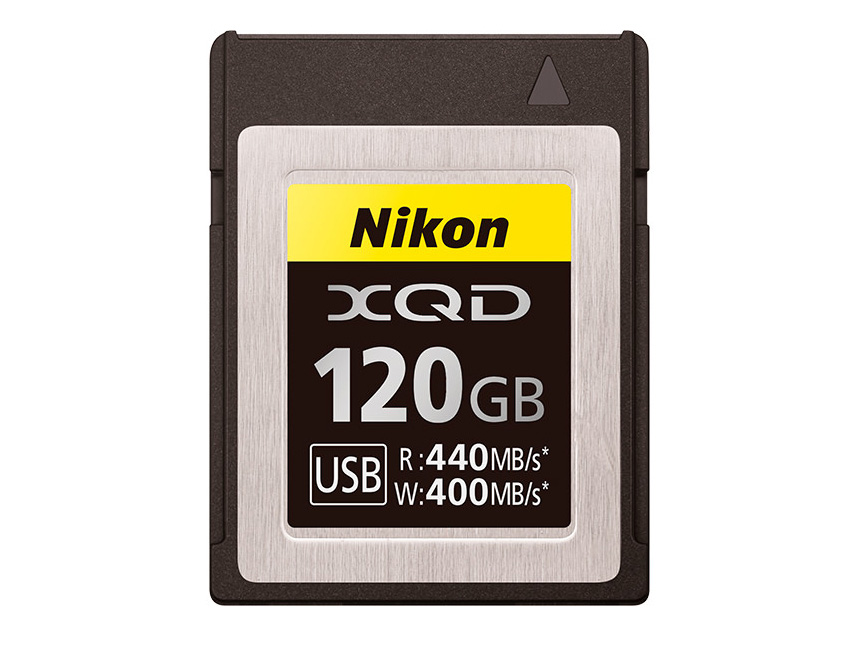
97. Nikon’s now offers its own XQD cards
Up until now, XQD cards have only been sold under Sony and Lexar brands, but now, Nikon is joining the party with its own offerings. 64GB and 120GB options with the company’s own branding are soon to be made available. Delkin Devices has also recently announced that it will be offering XQD cards under its own brand.
98. Support for CFExpress in future
A firmware update that will be issued at some time in the future will allow the camera to be compatible with the CFexpress format. This is a successor to the XQD format that looks set to deliver even better performance than today’s XQD cards can manage.
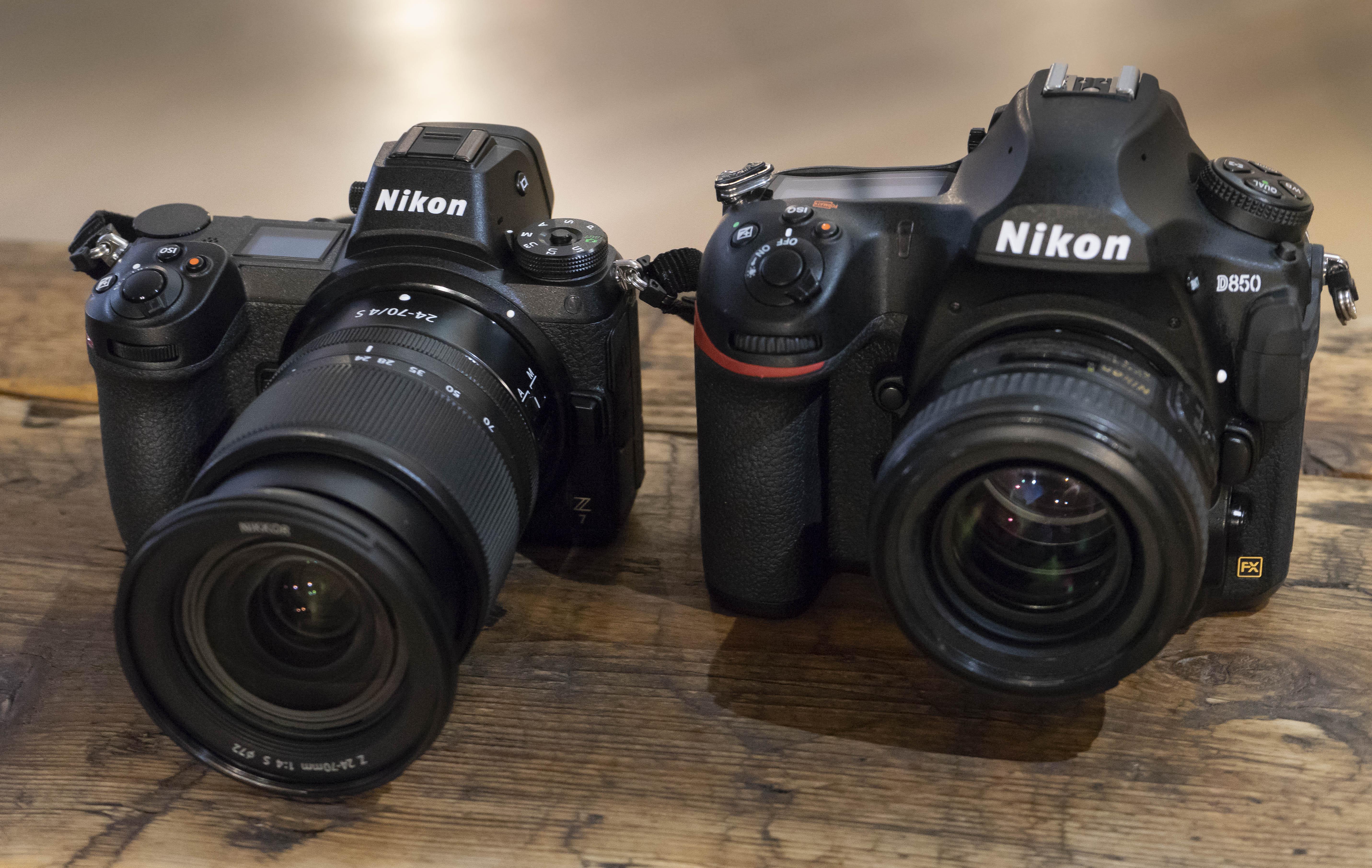
99. Nikon will not abandon DSLRs
This new system does not replace Nikon’s DSLR cameras – instead, the two will co-exist, giving users a choice. As if to prove this point, just a week after the Z-series was announced, Nikon updated its more junior D3400 DSLR with the D3500 model.
Buyers' guide: Best lenses for your Nikon DSLR
Buyers guide: Best Nikon camera
The former editor of Digital Camera World, "Matt G" has spent the bulk of his career working in or reporting on the photographic industry. For two and a half years he worked in the trade side of the business with Jessops and Wex, serving as content marketing manager for the latter.
Switching streams he also spent five years as a journalist, where he served as technical writer and technical editor for What Digital Camera before joining DCW, taking on assignments as a freelance writer and photographer in his own right. He currently works for SmartFrame, a specialist in image-streaming technology and protection.
